Portugal Travel Guide – Explore Portugal in 1 Month
Last Updated on May 2, 2024 by Wandering Beyond
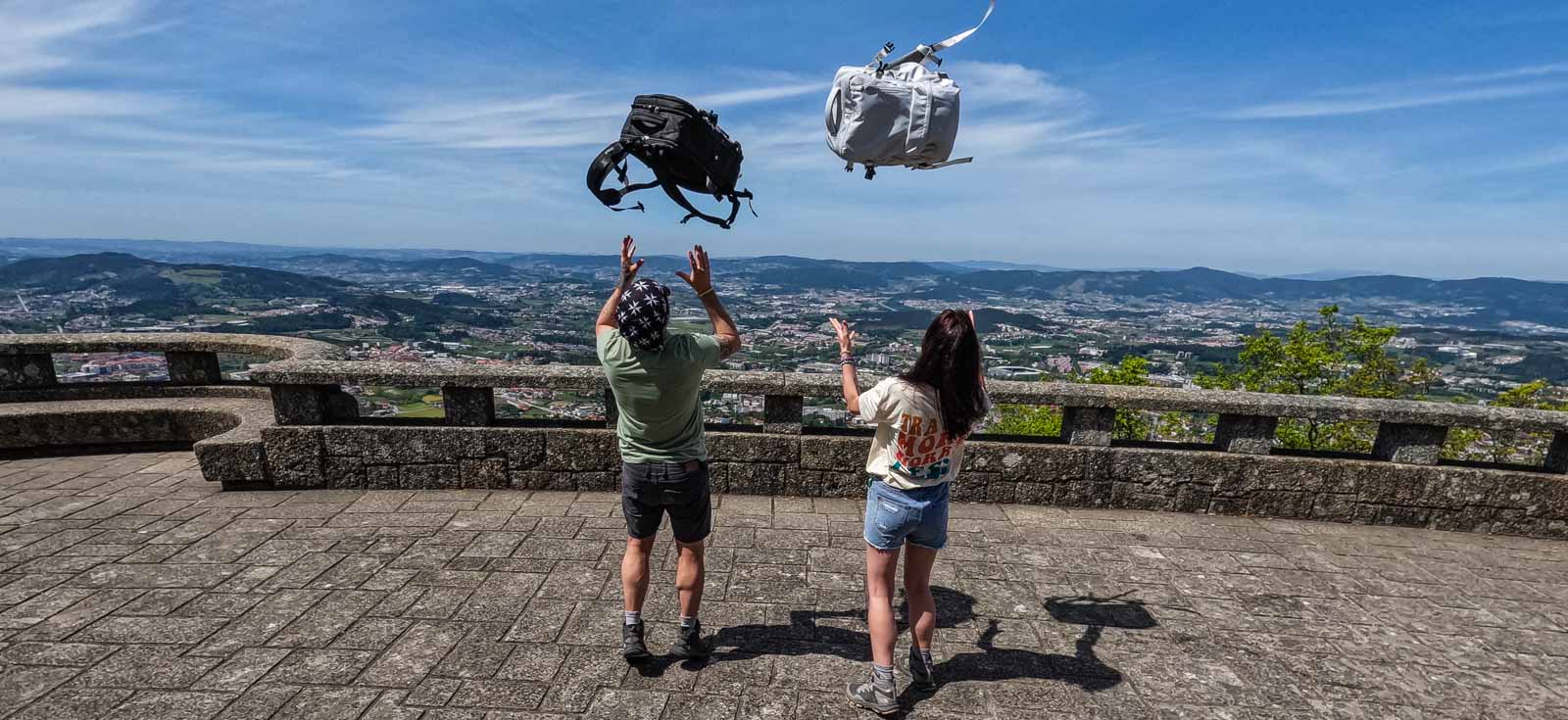
Portugal had been on our bucket list for quite some time until we finally dedicated a month to exploring this beautiful country. However, even with plenty of time, we still needed more to fully uncover all its wonders. But hey, that’s always a good excuse to visit again, right?
Situated in the heart of southwest Europe on the incredible Iberian Peninsula, Portugal is surrounded by the Atlantic and Mediterranean oceans. It offers many attractions for every traveller, from architecture and coastlines to untouched nature, delicious cuisine, and several beaches.
Our visit to Portugal wasn’t just about exploration; it was a mixture of experiences. We crossed different regions, each offering its own unique charm and climate. Every corner of Portugal was beautiful, from Lisbon’s vibrant city to Almada’s tranquil shores.
And let’s not forget the unexpected fun. When we arrived on São Miguel, the largest island of the Azores, we had to navigate through different time zones within the same country, adding more excitement to our adventure. We knew Portugal was a country we must visit since everyone says how beautiful it is. Still, we never thought it could provide such diversity!
In this Portugal travel guide, you’ll find all the information you need on where to go, the best places to visit, accommodation options, transportation, and much more to make your next trip effortless.
Lisbon
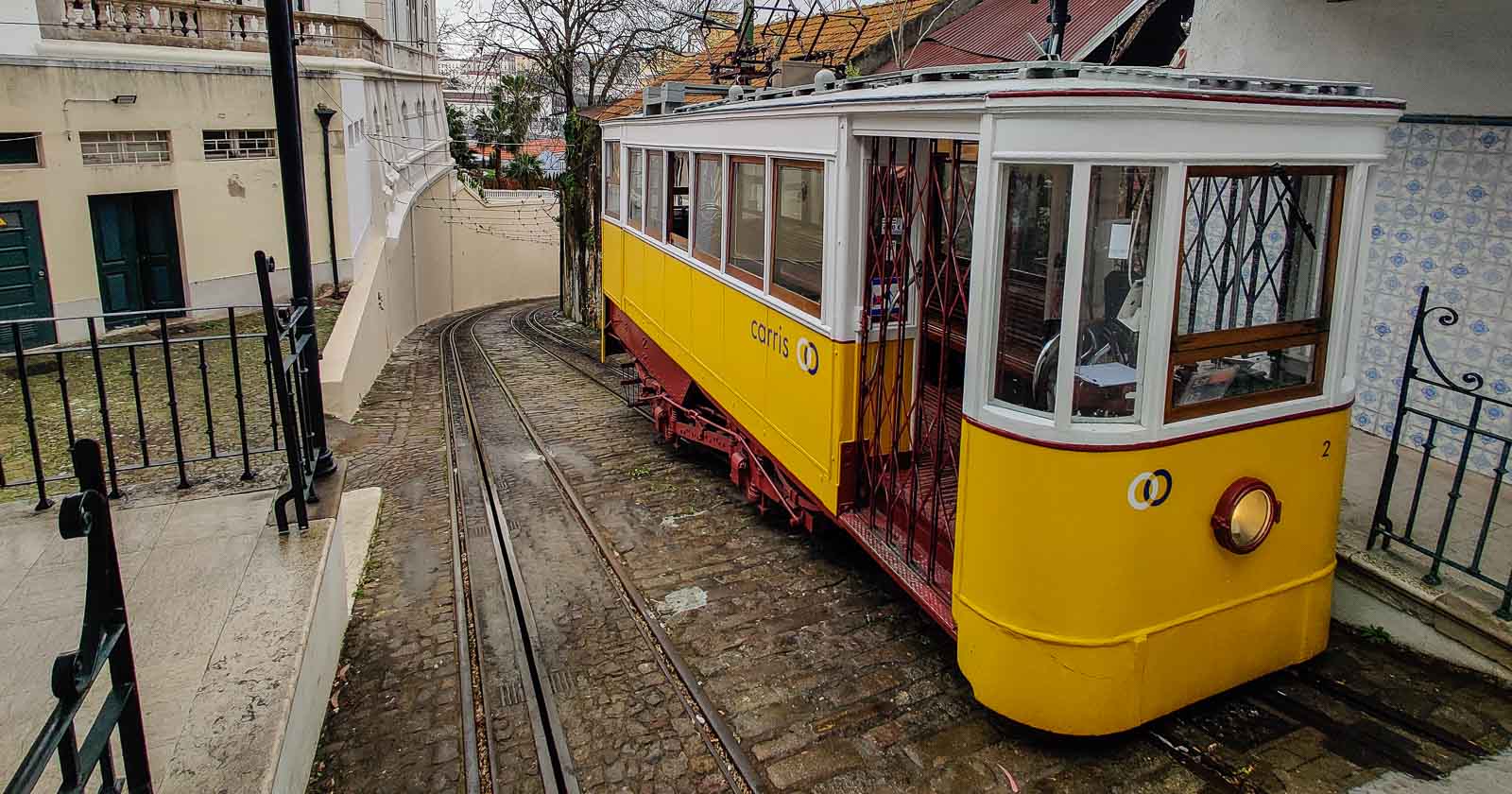
Although we don’t like cities and usually avoid them, Lisbon is different. We really enjoyed our time exploring every corner of this vibrant city. Its colourful houses, historic trams, cobbled streets, and breathtaking views are incredible. With so many attractions and activities, one could easily spend a week or more here and still discover new and fascinating places.
Things to do in Lisbon
Wander Through the Main Square
Praça do Comércio is one of Europe’s most beautiful squares and Lisbon’s largest and most significant square. Its central location in the heart of the city’s downtown area offers outstanding views to the south, overlooking the Tejo River.
Tram 28
Tram 28 offers a remarkable experience in Lisbon. Its unique route, indicated by tight turns, twists, and inclines, can only be navigated effectively by the original 1930s Remodelado trams. This makes it impossible for their modern replicas to meet the demands of the route.
Belém Tower
Situated along the River Tagus, the Belem Tower, built in the early 16th century, symbolises Portugal’s remarkable Age of Discoveries. This iconic monument is Portugal’s most celebrated landmark and is honoured as one of the country’s Seven Wonders.
Tickets for entry to the tower can be purchased onsite or at the nearby Jeronimos Monastery. The most convenient and secure option is to buy the tickets online.
Santa Justa lift
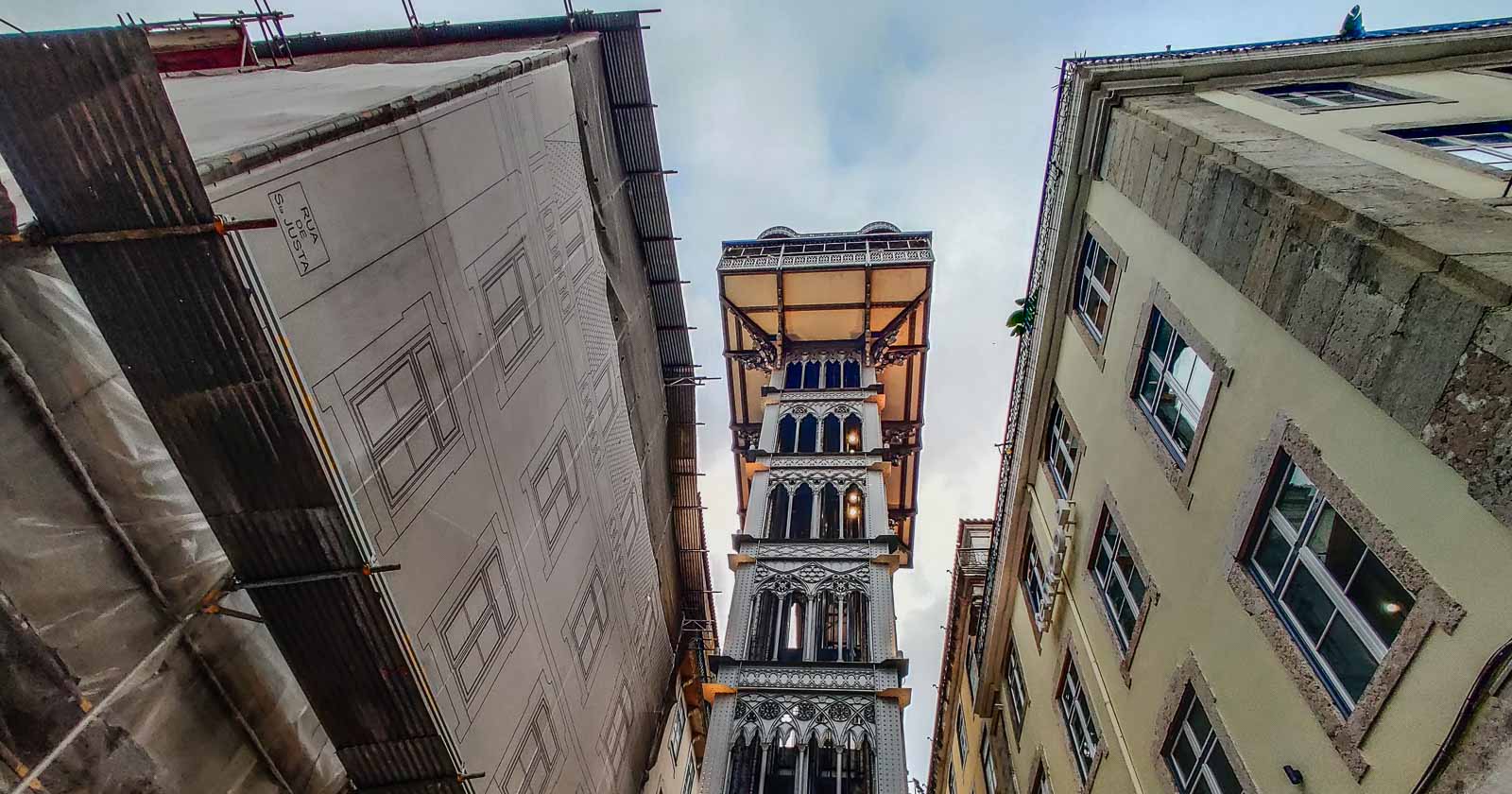
Another famous landmark in Lisbon is the Santa Justa Lift, which links the lower streets of the Baixa district to the elevated Bairro Alto neighbourhood. Admission to the observation deck costs €1.50, while a round-trip ticket for the elevator ride costs €5.30.
To avoid waiting for hours to take the lift, you can also make your way up to the observation deck on foot.
Viewpoints at Miradouro de Santa Luzia
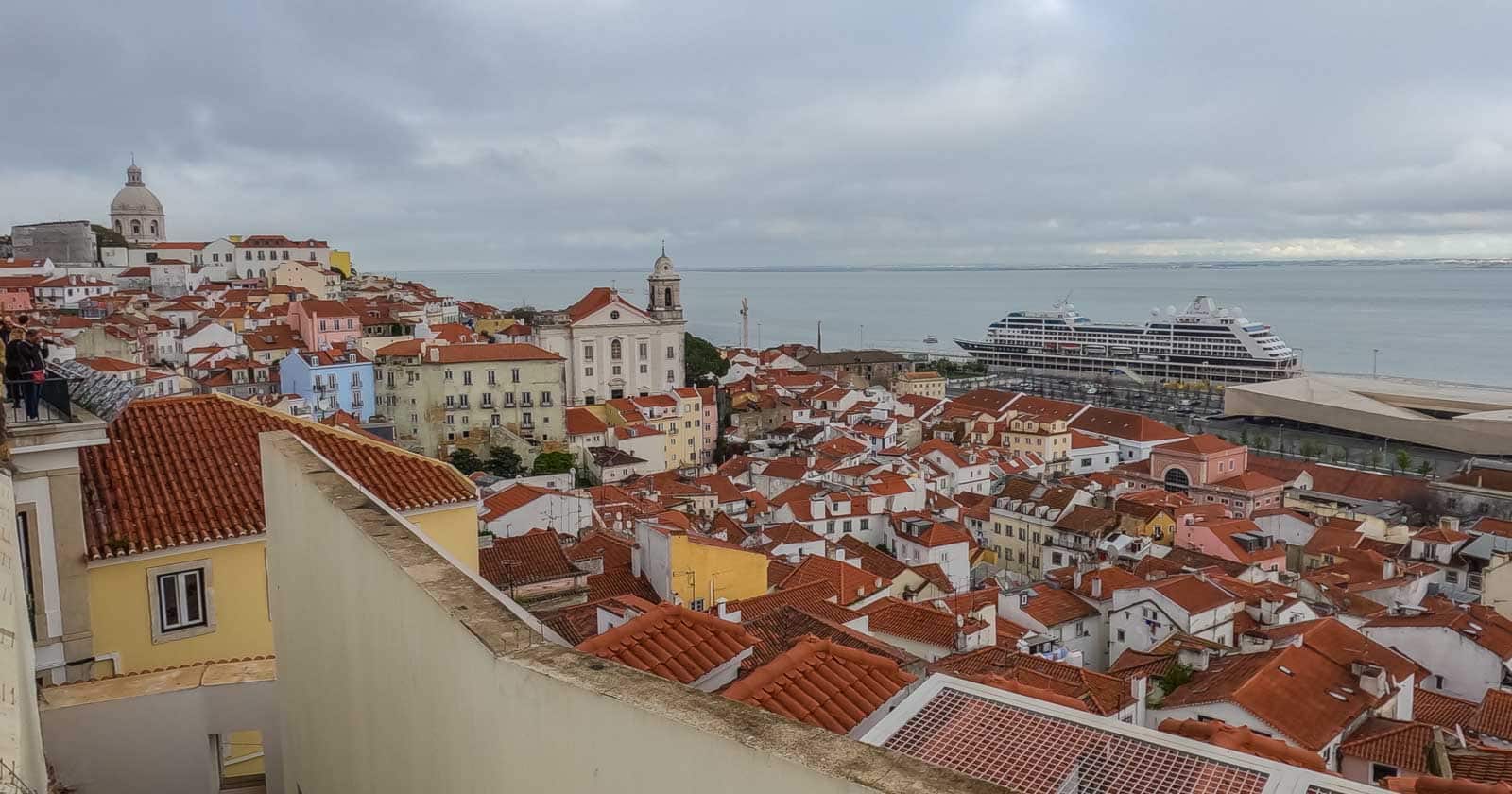
One of the best vantage points from which to admire old Lisbon is the tiled terrace of Santa Luzia. This tranquil viewpoint offers visitors a glimpse of Lisbon’s historic Old Town, the Alfama district.
The landscaped terrace adjacent to the Church of St. Lucy or Santa Luzia is renowned as one of the city’s most romantic locations. It serves as the headquarters of the Order of Malta in Portugal.
Getting Around Lisbon
Getting around Lisbon is straightforward, with many transportation options, such as buses, trams, metro, funiculars, ferries, and trains. However, the most economical and hassle-free choice is the rechargeable Navegante Occasional card, which is valid for a year.
This card facilitates payment for all public transport in Lisbon, covering metro, bus, tram, funicular, ferry, and train services.
If you don’t buy a Navegante card, you can purchase bus, tram, and funicular tickets directly from the driver. Alternatively, for the metro, you can use a bank card at the contactless validator gates. Fares bought on board are more expensive.
Where to Buy a Navengante Card
As you arrive in Lisbon, you can purchase a Navegante occasional card for €0.50c and load it with your preferred option, whether a day ticket or two days.
You can top up the card at any automatic ticket machine or ticket office in Metro, ferry, and suburban train stations. Additionally, there are various local selling points in Lisbon, such as Payshop, CTT, Pagaqui, and MOB shops.
Children under four years old travel for free when accompanied by a cardholder (or paying) adult.
Where to Stay in Lisbon
Deciding on accommodation in a new city like Lisbon can be challenging sometimes. You might be unsure whether to choose historic districts, tranquil residential areas, hostels, luxurious accommodations or hotels. Explore the options below for great deals.
Almada
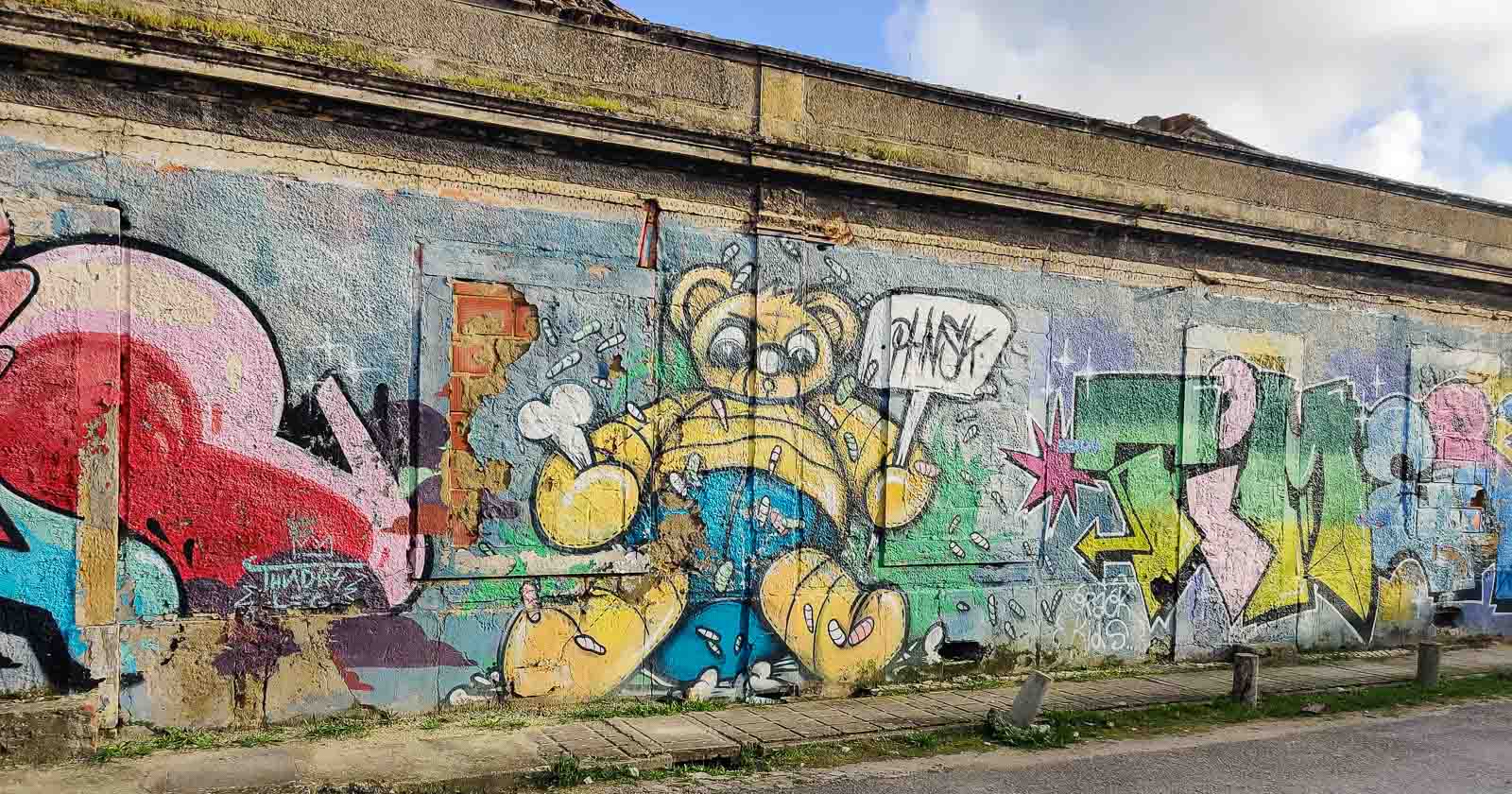
Almada is a city and a municipality in Portugal that we really loved. It’s on the southern bank of the Tagus River, across from Lisbon, where the 25 de Abril Bridge connects the two cities.
Exploring Almada is convenient and budget-friendly. You can reach this city by a 33-minute train ride costing €1-€2, a 32-minute bus ride costing €2-€3 (bus number 3716), or a direct ferry departing from Cais do Sodré to Cacilhas every 10 minutes, operating daily, for just €1.40.
What to See in Almada
Cacilhas
Cacilhas is a small town where ferries from Cais do Sodré dock. It’s renowned for its fresh fish, which is grilled in most waterfront restaurants. Upon arrival, you can’t miss the Igreja de Nossa Senhora do Bom Sucesso church and the Fernando II Gloria, a Portuguese Navy frigate proudly displayed along the shore.
Santuário de Cristo Rei
Santuário de Cristo Rei is a Catholic monument and shrine devoted to the Sacred Heart of Jesus Christ. It has the best viewpoints over Lisbon and draws inspiration from Brazil’s Christ the Redeemer statue in Rio de Janeiro. This influence arose from a visit by the Cardinal Patriarch of Lisbon to the Brazilian monument.
The entrance fee is €8, payable only in cash.
Opening hours:
- July 1st to July 14th: 9:30am to 6:45pm.
- July 15th to August 31st: 9:30am to 7:30pm
- September 1st to September 20th: 9:30am to 6:45pm.
- September 21st to June 30th: 9:30am to 6pm
During our visit in March, we noticed a sign stating the following opening hours. However, it is important to double-check the opening hours on your specific visit dates.
- October to March: 10am to 6pm
- April to September: 10am to 7pm
Late arrivals will not be allowed to enter the sanctuary. We experienced this firsthand and had to admire it from outside. Fortunately, we love walking and could see it from various viewpoints.
Quinta da Arealva
Quinta da Arealva is our most favourite urban street art spot. It’s found along the riverside area of Almada, which is hard to miss the sight of a long-abandoned 18th-century winery. Despite decades of ruin, the site is decorated with incredible graffiti artwork and is also an excellent spot for sunsets. Despite being abandoned, it remains safe to visit.
Cova da Piedade
Cova da Piedade in Almada is a really fascinating area. We spent a good time wandering through its vibrant streets and discovering more abandoned warehouses. If you love murals, this area is for you, as you can find them all over the buildings.
Passadiços da Mata dos Medos
Passadiços da Mata dos Medos is a haven for nature lovers. You can spend hours exploring the surroundings as it’s a very large spot providing a relaxing experience. There are several entrances that lead into this paradise, but for the shortest route to the viewpoint, look for a green gate with a sign indicating “acesso a viaturas de serviço.”
25 de April Bridge
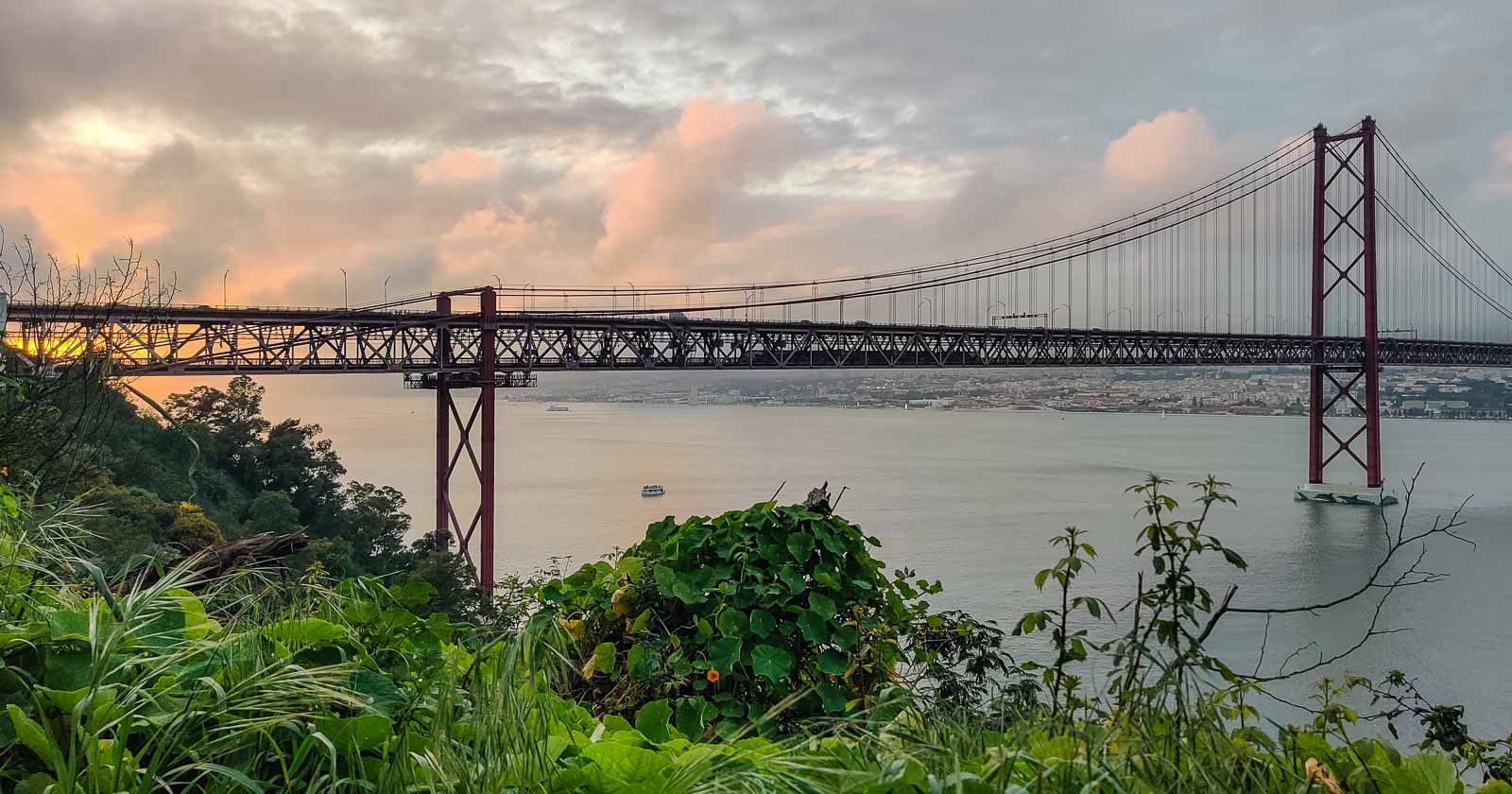
The 25 de Abril Bridge in Portugal connects Lisbon to Almada. Although most people choose to see this bridge from Lisbon, we preferred to visit from Almada, which actually was an advantage as we could enjoy one of the most beautiful sunsets close to the bridge, away from the crowds.
Getting Around Almada
While exploring certain areas in Almada can be done on foot, reaching all attractions may be challenging, considering the long distances.
Public transport is convenient, but a single bus ticket costs €2.60, which is quite expensive knowing you must catch more than one. We tried to use the Navengante Card on the buses, but it didn’t work outside Lisbon.
We believe the ideal way to get around Almada is by tram and one ticket costs €0.85.
Sintra
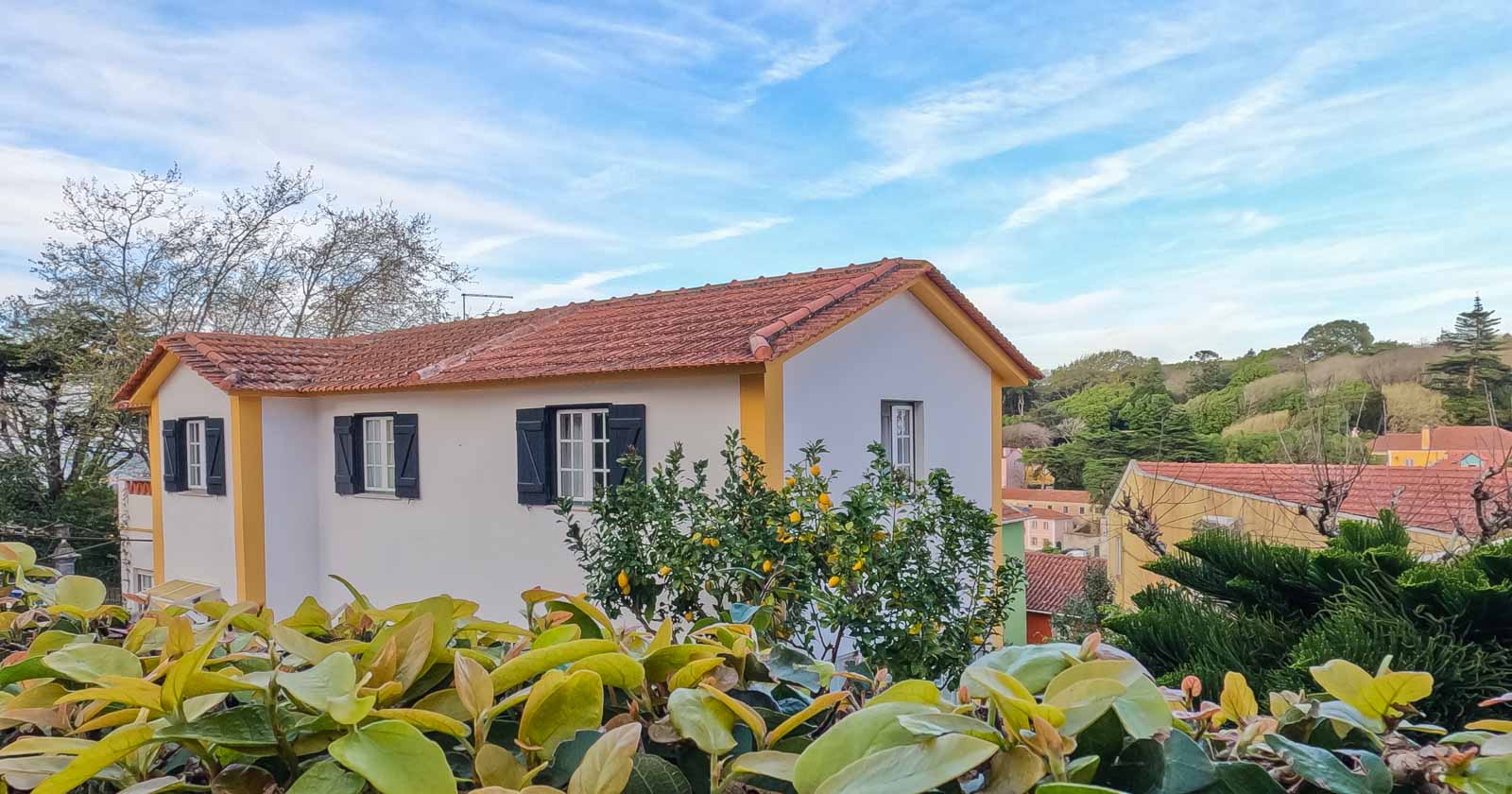
Sintra is a magical town surrounded by mountains, mostly known for its untouched beauty, palaces, and castles. It’s an ideal destination for a day trip from Lisbon, as it’s only 40 minutes away.
Due to its small size, you can see all of Sintra’s wonders in a day; however, two days are enough for a more comfortable exploration. For a quieter and less crowded experience, we recommend visiting on weekdays and avoiding the weekends.
Not to Miss in Sintra
National Palace
The National Palace is located in the centre of Sintra and has a rich history spanning over 1000 years, making it one of Portugal’s oldest palaces.
To fully experience the National Palace, leave at least two hours. You have approximately 40 minutes to explore the staterooms and interior and an extra 30 minutes usually spent on the terraces and the chapel.
The National Palace welcomes visitors daily from 9:30am until 7:00pm, with the last entrance at 6:30pm.
Admission fees are around €10.00 for adults, €8.50 for children, €8.50 for seniors, and €33.00 for families. (Price might vary depending on the time of visit)
Villa Sassetti
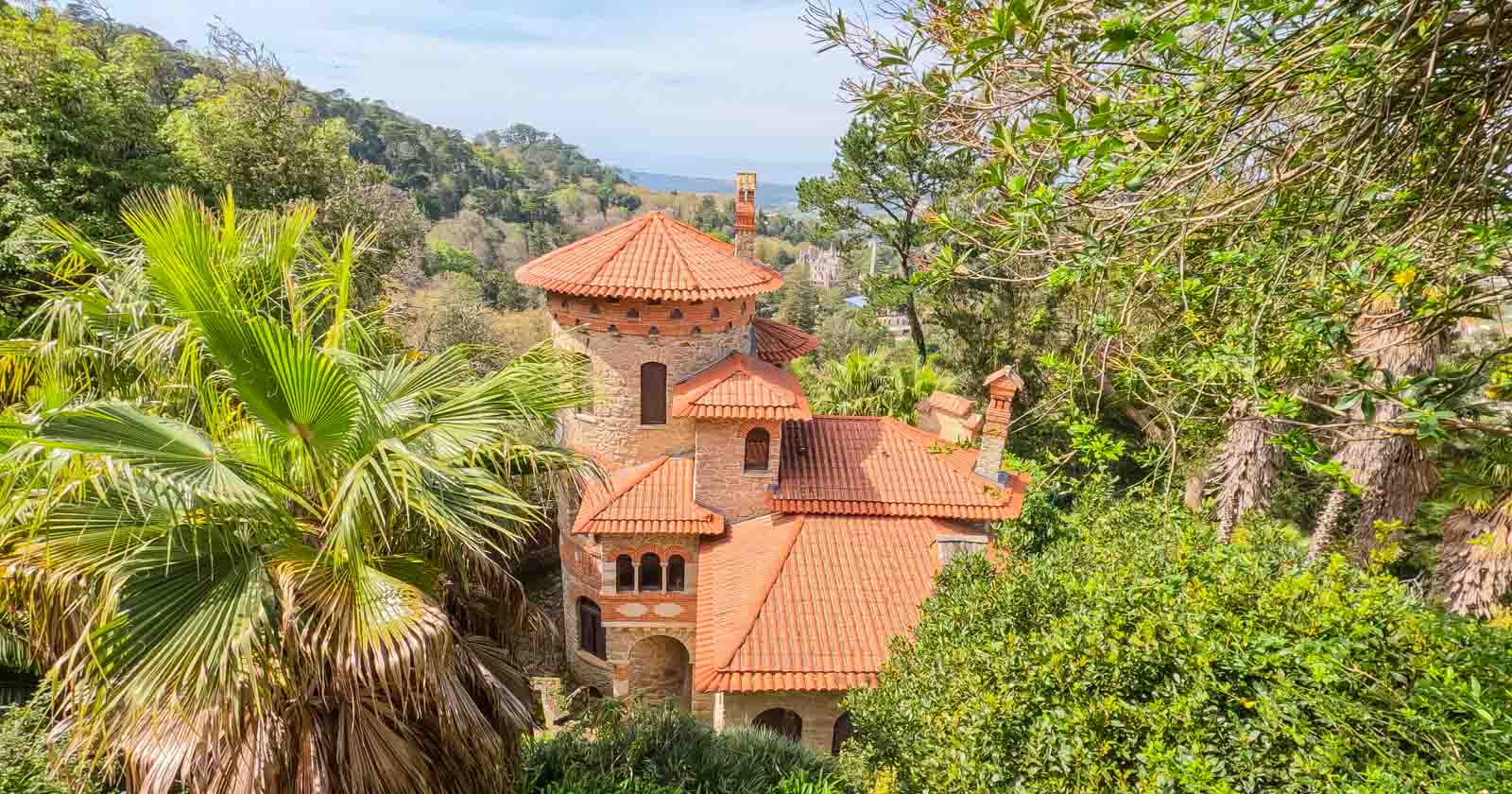
Villa Sassetti is one of our favourite places in Sintra. It’s a beautiful garden with unique landscapes offering a serene escape in the heart of Sintra. We visited during spring, and we can’t even explain how truly beautiful the pathways are.
Opening hours are Monday to Sunday from 9am to 6pm, and admission is free!
Quinta da Regaleira
Quinta da Regaleira is among the monuments within Sintra’s Cultural Landscape, recognised by UNESCO as a World Heritage Site. Exploring the gardens and hidden tunnels, you feel as if you’re in a fairytale.
The opening hours are as follows:
- January to April: 10am to 6:30pm
- May to September: 10am to 7pm
- October to December: 10am to 6:30pm
The entrance fee is €12 for adults, €7 for youths (aged 6 to 17), and €7 for seniors.
Pena Palace
The Pena Palace is one of Portugal’s most famous tourist attractions. While Sintra has many palaces, Pena Palace is the favourite among most visitors, and its popularity is easily understandable. With its beautiful, fairy-tale-like architecture, decorated with vibrant red and yellow colours, it offers a truly magical experience. It permits 400 visitors per 30-minute time slot.
The opening hours for Pena Palace:
Park:
- Open from 9:00 AM to 7:00 PM
- Last ticket and admission at 6:00 PM
Palace:
- Open from 9:30 AM to 6:30 PM
Prices for the Palace and Park:
- Adults (18 – 64 years): €20
- Youths (6 – 17 years): €18
- Seniors (over 65 years): €18
- Family ticket (2 adults + 2 youths): €65
Castelo dos Mouros
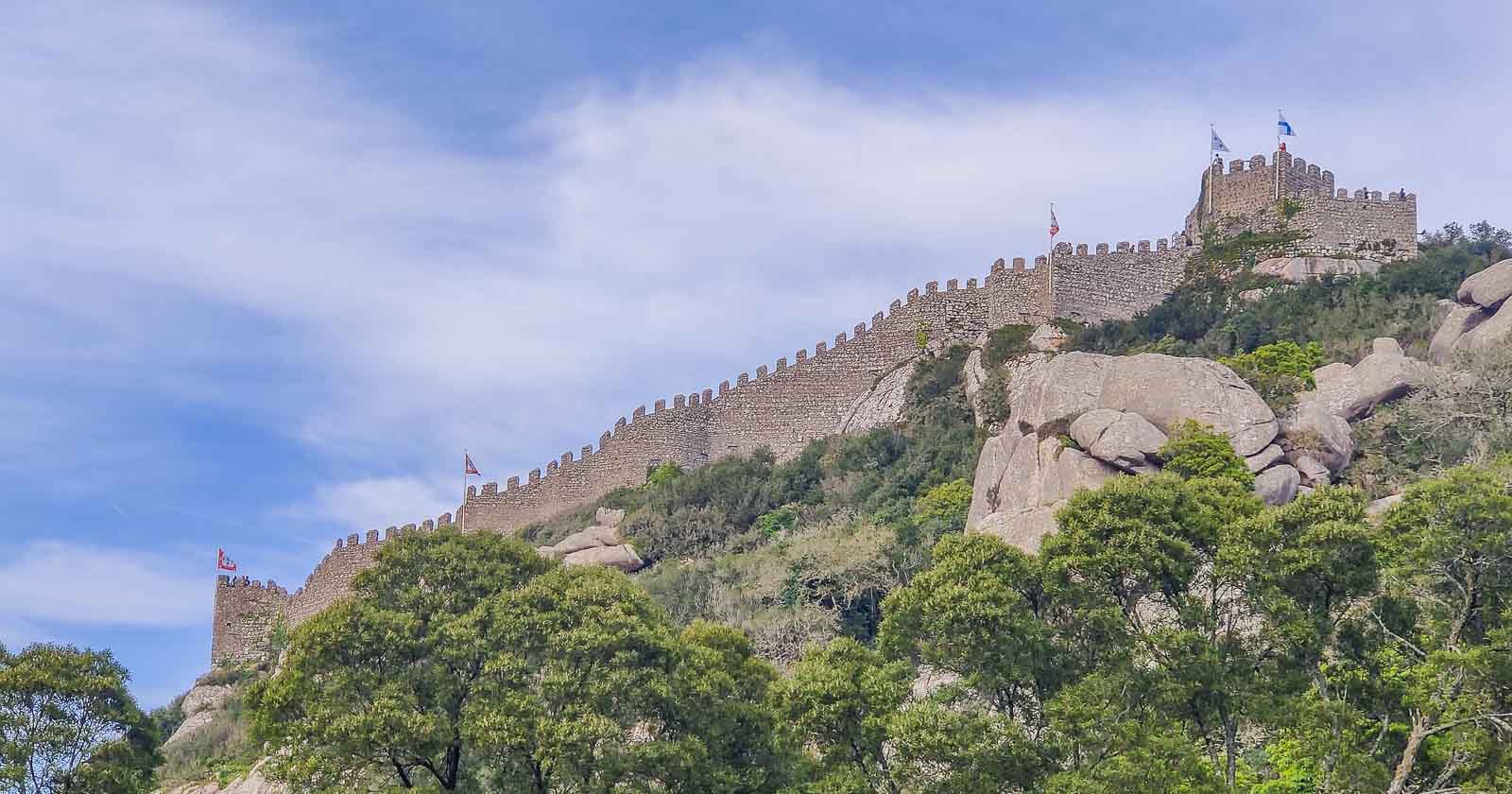
The Castelo dos Mouros stands alone on top of Sintra’s hill, surrounded by unusual walls. Unlike many other attractions in Sintra, this castle is mainly a stone fortress, which distinguishes it from the typical royal palaces in the area.
Here are the opening hours for Castelo dos Mouros:
- Open from 9:30am to 6:00pm
- Last ticket and last admission at 5:30pm
The ticket office is closed from 12pm to 1pm. Automatic ticket vending machines are available.
Entrance fees:
- Adults: €12
- Young persons aged 6 to 17: €10
- Seniors aged over 65: €10
- Family ticket (two adults and two children): €33
Getting Around Sintra
Sintra is split into two different areas, the new and old towns, which are both compact and easily reachable on foot. However, if you plan to visit each attraction, walking up the hills will take most of your time, especially if you have only one day.
We preferred to walk, as we prefer admiring attractions from the outside, and since we had three days in Sintra, we weren’t in a rush. We also managed to save money since transportation within Sintra isn’t cheap.
Apart from walking, you can use buses, taxis or Tuk Tuks in Sintra.
The most popular public transport is the 434 or 435 bus, which costs €7.60 one way. You can also buy a 24-hour ticket for €15.20 per person.
You can buy this ticket online, often at discounted rates: the 24-Hour Hop On Hop Off All Buses Ticket.
If you prefer to use taxis or Tuk Tuks, the cost is €10 per person. Taxi fares may vary, but they generally fall within that range.
You also have the option to go on a private Tuk Tuk tour in Sintra, where they guide you through the historic mountainous area.
Where to Stay in Sintra
Sintra offers an incredibly memorable experience. Whether you prefer a budget-friendly hostel, a luxurious hotel or a charming guesthouse, Sintra provides choices to accommodate every taste and budget.
We suggest you stay in the Historic Center as it’s close to all attractions. Due to Sintra’s popularity among tourists, booking in advance is important, particularly during peak summer periods when accommodations tend to fill up quickly.
São Miguel Island Azores
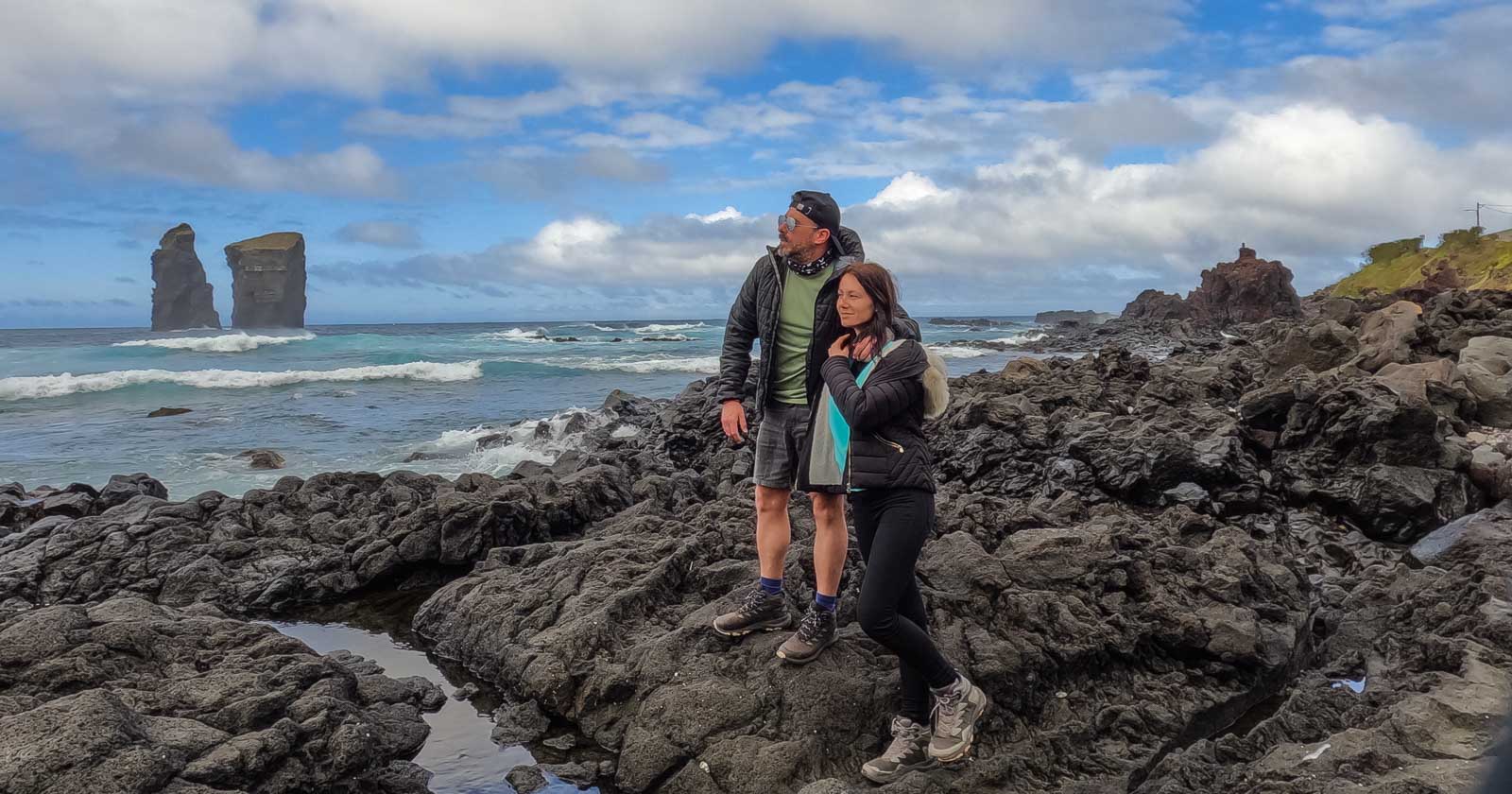
São Miguel Island, often called “The Green Island” (Ilha Verde), is the largest, most populated, and volcanically active among the nine Azores archipelago islands.
But wait… don’t be misled by the term “most populated” – it doesn’t mean it’s overcrowded! In fact, São Miguel Island is a paradise on earth. Most residents reside in Ponta Delgada, and you barely see people outside the city.
Of course, this might vary depending on the time of your visit; during the summer months, it can get quite busy. However, we explored the island in March and can confirm that it’s one of the most serene islands we’ve ever experienced.
If you’re looking for volcanic landscapes, rich history, stunning architecture, coastal panoramas, black sand beaches, and geothermal springs, São Miguel is the ideal destination to explore.
Not to Miss in São Miguel
Monte Palace Hotel Ruins
The Monte Palace Hotel Ruins, once awarded Hotel of the Year, closed within a week due to bankruptcy after just 18 months of operation. Everything, from beds to elevators, was stripped away, leaving behind a vandalised, abandoned shell of a building covered in graffiti.
Don’t be disappointed by your first impression, as the hotel offers breathtaking views from every floor. Once you reach the roof, you’ll enjoy the most beautiful views of São Miguel.
Miradouro da Boca Do Inferno
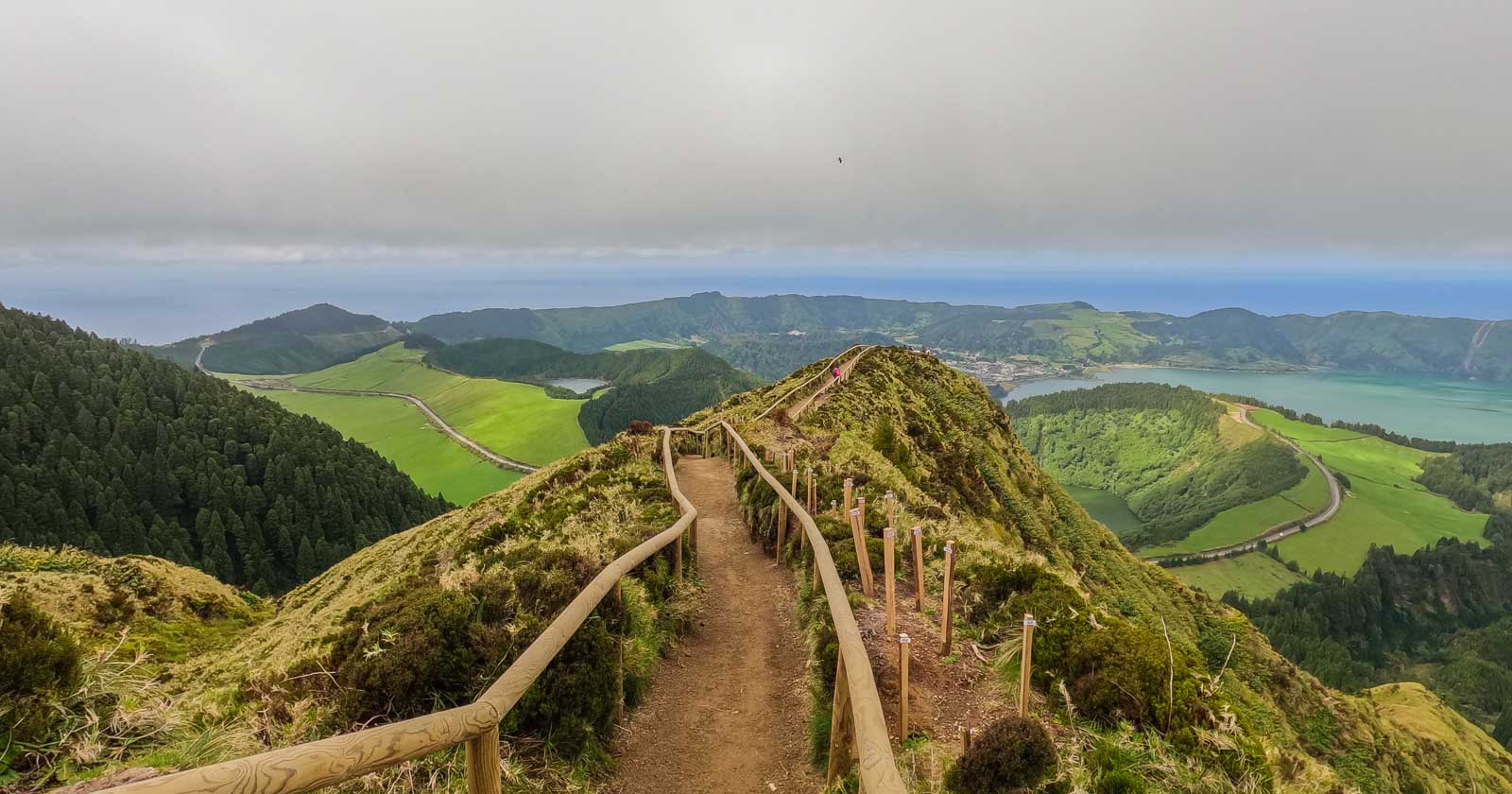
Miradouro da Boca Do Inferno is one of our favourite viewpoints in São Miguel. Accessing it can be challenging due to its geographic location, often covered in clouds and fog. We tried several times before finally catching a clear view.
Even when the sky clears, clouds immediately move in. The views are stunning, so if you arrive and visibility is poor, wait a while, as the view is 100% worth it!
Mosteiros Black Beach
Mosteiros Beach is a large black sand beach full of large rock formations, mostly known for its spectacular sunsets. The black sand results from the island’s volcanic origins, lending the beach a distinctive and magical appeal. There are more than 20 volcanic black beaches on São Miguel, but Mosteiros is our favourite.
Parque Natural da Ribeira dos Caldeirões
The Parque Natural da Ribeira dos Caldeirões is a protected area that extends along the Ribeira dos Caldeirões watercourse in the parish of Achada, Nordeste. This natural park is on the slopes of Serra da Tronqueira and contains a section of the Ribeira do Guilherme watercourse.
Visitors can enter for free and explore several hiking trails and a beautiful waterfall.
Lagoa do Fogo
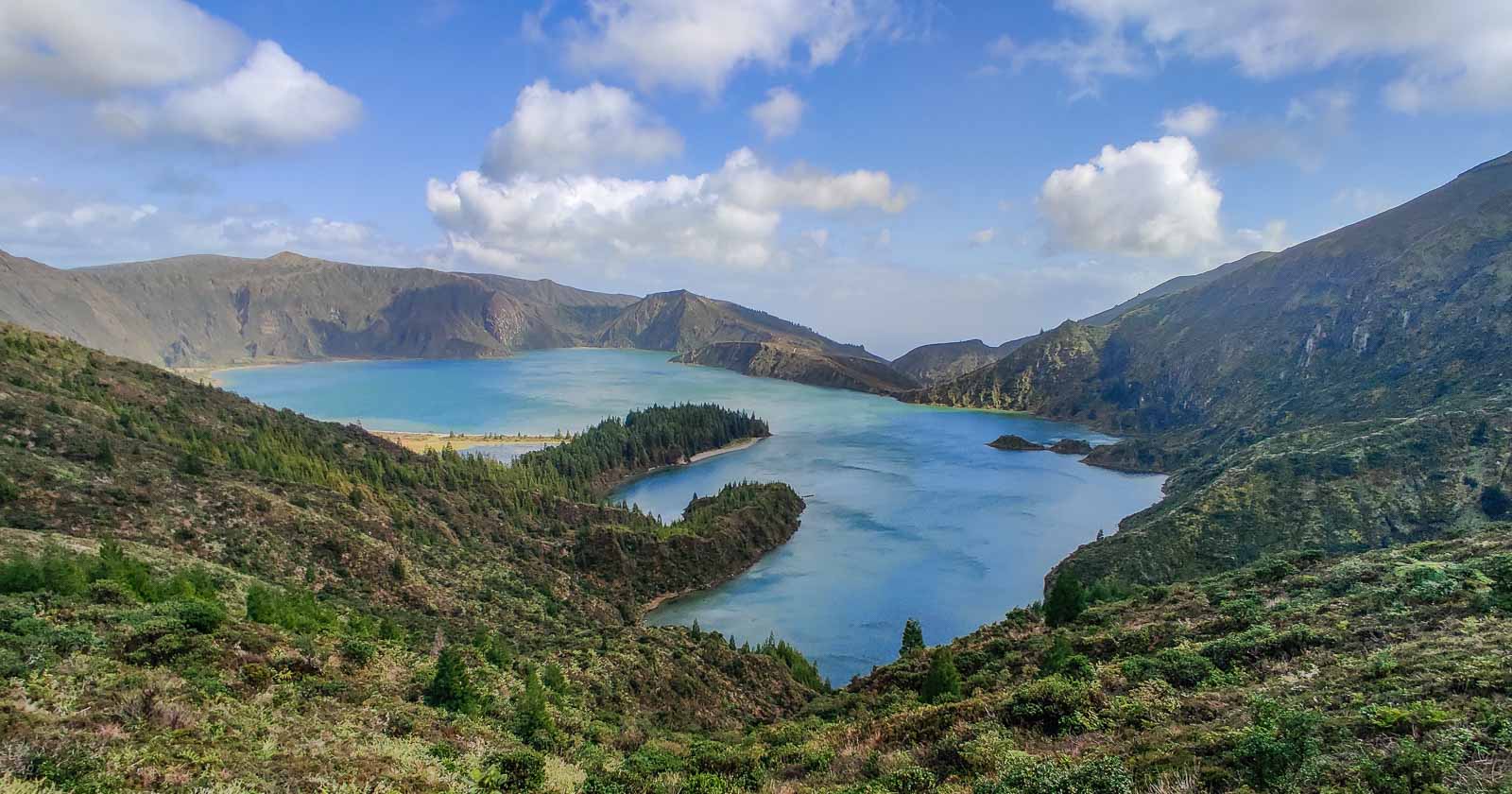
Lagoa do Fogo is a destination you can’t miss in São Miguel. It’s one of the largest bodies of water in the Azores, offering breathtaking views. The hike is relatively easy, usually taking around 1.5 hours to complete, and the trails surrounding the lake are incredible.
Swimming in Lagoa do Fogo is not permitted.
Ermida de Nossa Senhora da Paz
Ermida de Nossa Senhora da Paz is on top of Mount Our Lady of Peace in Vila Franca do Campo municipality. Built-in 1764, it’s one of São Miguel’s most famous monuments, attracting thousands of visitors each year.
To reach the top, you need to climb a 100-step staircase and ten landings, where you can enjoy amazing views.
Lagoa das Furnas
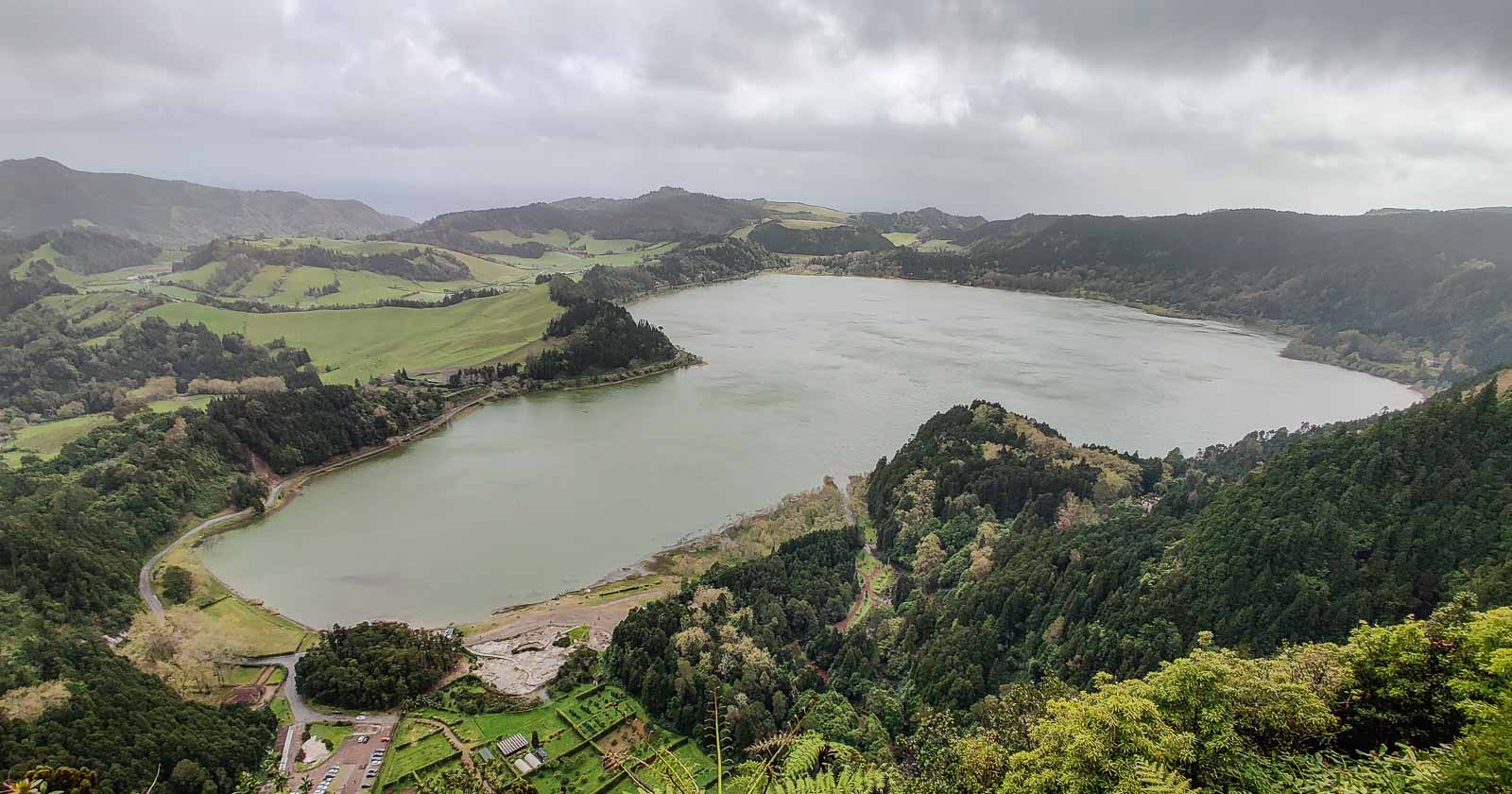
Lagoa das Furnas is famous for its serene scenery and close connection to nature, offering a unique experience as this is not just a lake. You can witness the Calderas/Volcanic Fumaroles and observe the traditional method of cooking food underground using volcanic steam. We highly recommend trying the cuisine at Tony’s, one of the top restaurants known for its traditional cooking style.
Despite ongoing volcanic activity around Furnas Lake, the Furnas Volcano has remained inactive since its last eruption in 1630.
Lagoa do Congro
Lagoa do Congro is a serene, green lake accessed by a short twenty-minute hike along a very slippery trail. Upon completing the hike, you’ll discover this panoramic lake surrounded by a forest, providing a perfect opportunity to unwind and connect with nature in tranquillity.
We went there during a storm and ended up soaking wet; however, we still loved every minute we spent there, regardless of the weather.
Lagoa Empadadas, Lagoa Rasa & Lagoa de Eguas
Lagoa Empadadas, Lagoa Rasa, and Lagoa de Eguas form a trio of small lakes surrounded by a stunning forest near Lagoa das Sete Cidades. Each lake is separated from the others by narrow stretches of land.
You must pass through a narrow side next to a green closed fence to enter. Upon passing through the gate, you’ll cross a wide farm road winding through a large forest. Then, follow the signs and enter the woods to get to each lake.
Avoid visiting in the late afternoon as it gets dark, and you won’t see anything. Be careful as the ground might be very slippery, especially in bad weather.
Ponta Delgada
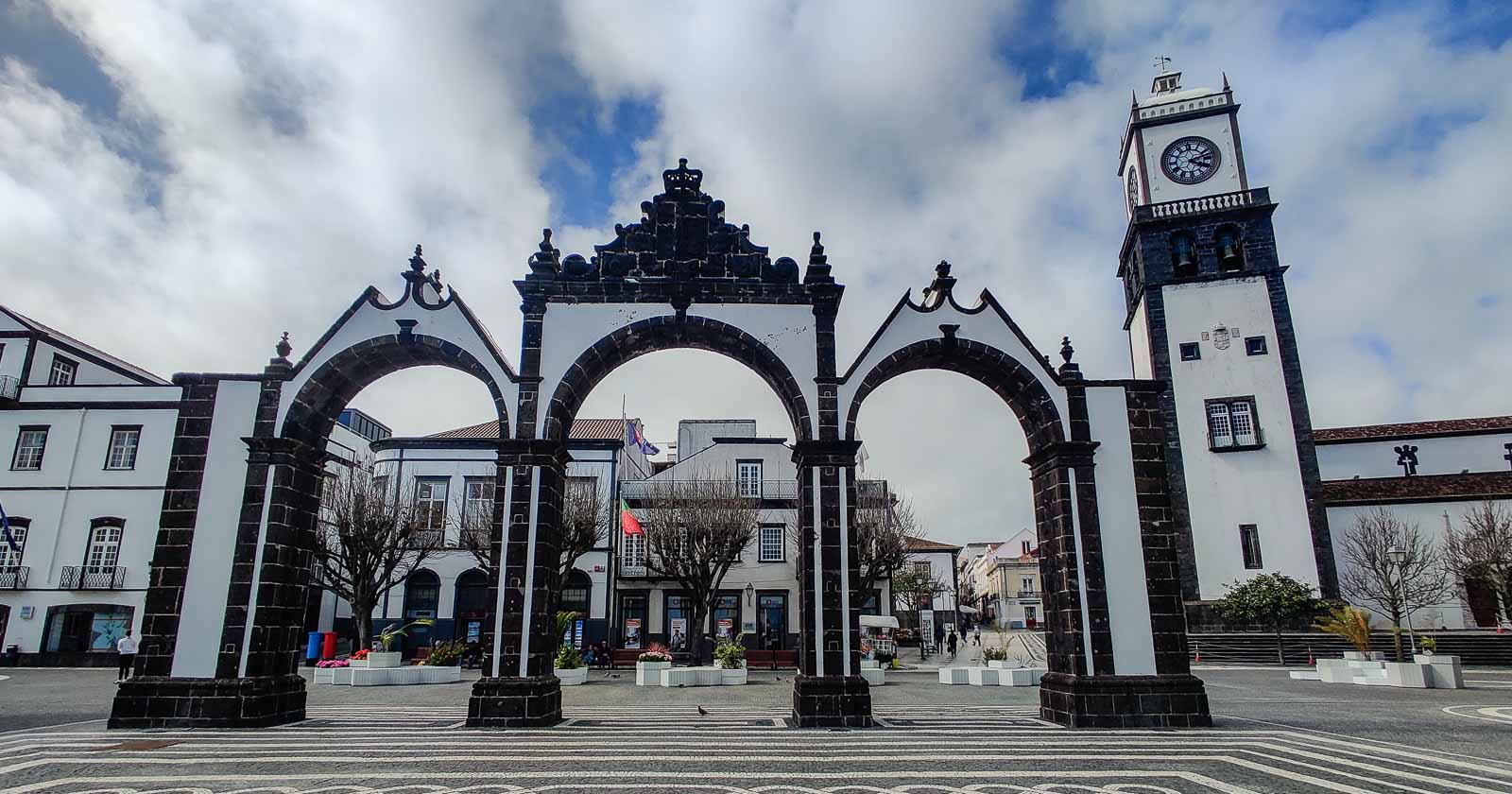
Ponta Delgada is the capital of Portugal’s Azores archipelago. But don’t expect your typical busy capital atmosphere here! Ponta Delgada is one of the most beautiful cities we’ve ever visited. Its origins trace back to a tranquil fishing village in the 15th century, which, surprisingly, not much has changed till today.
If you’re considering visiting Ponta Delgada, our answer is 100% yes, at least for a day. It combines the old and the modern with a vibrant waterfront district, charming old town, and picturesque parks.
How to Get to São Miguel
The only way to get to São Miguel is by plane. Upon arrival, you’ll land at the airport named after Pope John Paul II in Ponta Delgada.
Scheduled airlines such as Ryanair, TAP Portugal, SATA Air Açores, and Azores Airlines operate regular flights from Lisbon and Porto.
Getting Around São Miguel
São Miguel is a small island, and getting around is quite easy. While public transport and taxis are good options, renting a car is the most efficient way to explore the island.
Relying on buses in São Miguel is challenging and limited, as the routes may not always be straightforward or practical, and the schedules can sometimes be unreliable.
In our opinion, renting a car in São Miguel is the best choice. It allows you to move around without changing schedules and offers greater flexibility. With the convenience of picking up the car directly at the airport, you can explore São Miguel immediately.
We strongly recommend Magic Islands Rent-a-Car for an exceptional experience. They are highly reliable, offer excellent vehicles, and provide the best service on the island.
Where to Stay in São Miguel
São Miguel offers many accommodation options, including luxurious options. Whether you seek romantic boutique-style lodgings, contemporary hotels, or traditional country houses, you will surely find the perfect fit for your preferences.
While most travellers choose to stay in Ponta Delgada, the island’s only town with vibrant nightlife and many dining options for evening relaxation, we recommend staying in accommodations in Candelária, Ponta Garca, or Nordeste for a more serene atmosphere.
Porto
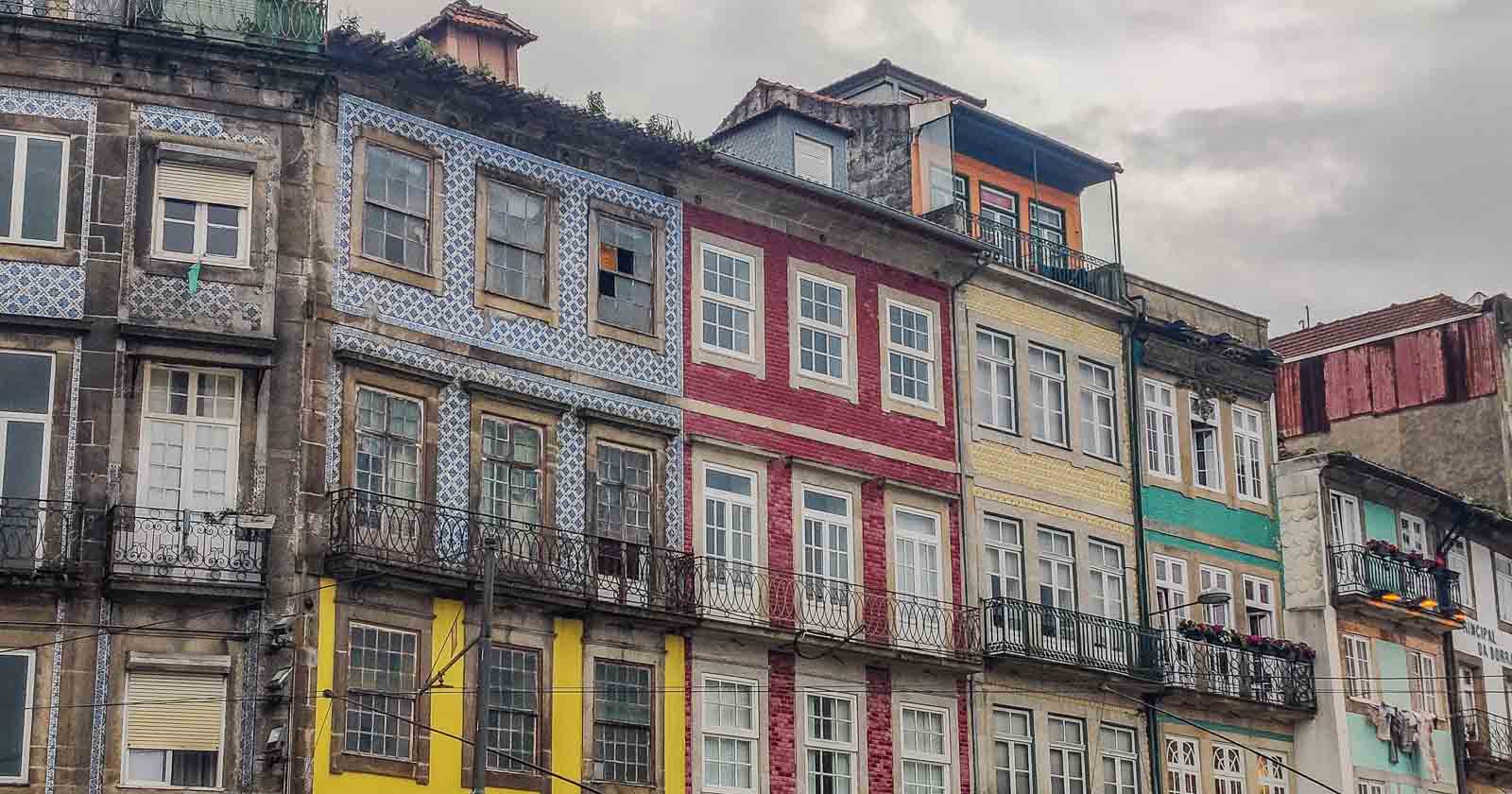
Porto is a coastal city in northwestern Portugal. It’s known for its sweet port wine, large bridges over the Douro River and cobblestoned streets. While undeniably beautiful, we must admit that our expectations were slightly higher.
During our visit at the end of March, typically a low season, we were surprised to find Porto relatively small but so overcrowded. Construction work was underway in most areas, often overlooked by cranes.
Taking photos of particular buildings and views was quite challenging in the middle of the crowds and ongoing construction. However, overall, we’re glad we visited Porto as there’s so much to see, and we still had a great time.
Must See in Porto
Azulejo Buildings
Azulejo Buildings are buildings decorated with glazed blue ceramic tiles from the 14th century onwards. These tiles are everywhere throughout the city, serving as one of Porto’s most iconic indications of rich history.
The best locations in Porto to admire Azulejo tiles include São Bento Station, Porto Cathedral, Igreja de Santo Ildefonso, Igreja do Carmo, and Capela das Almas.
Luís I Bridge
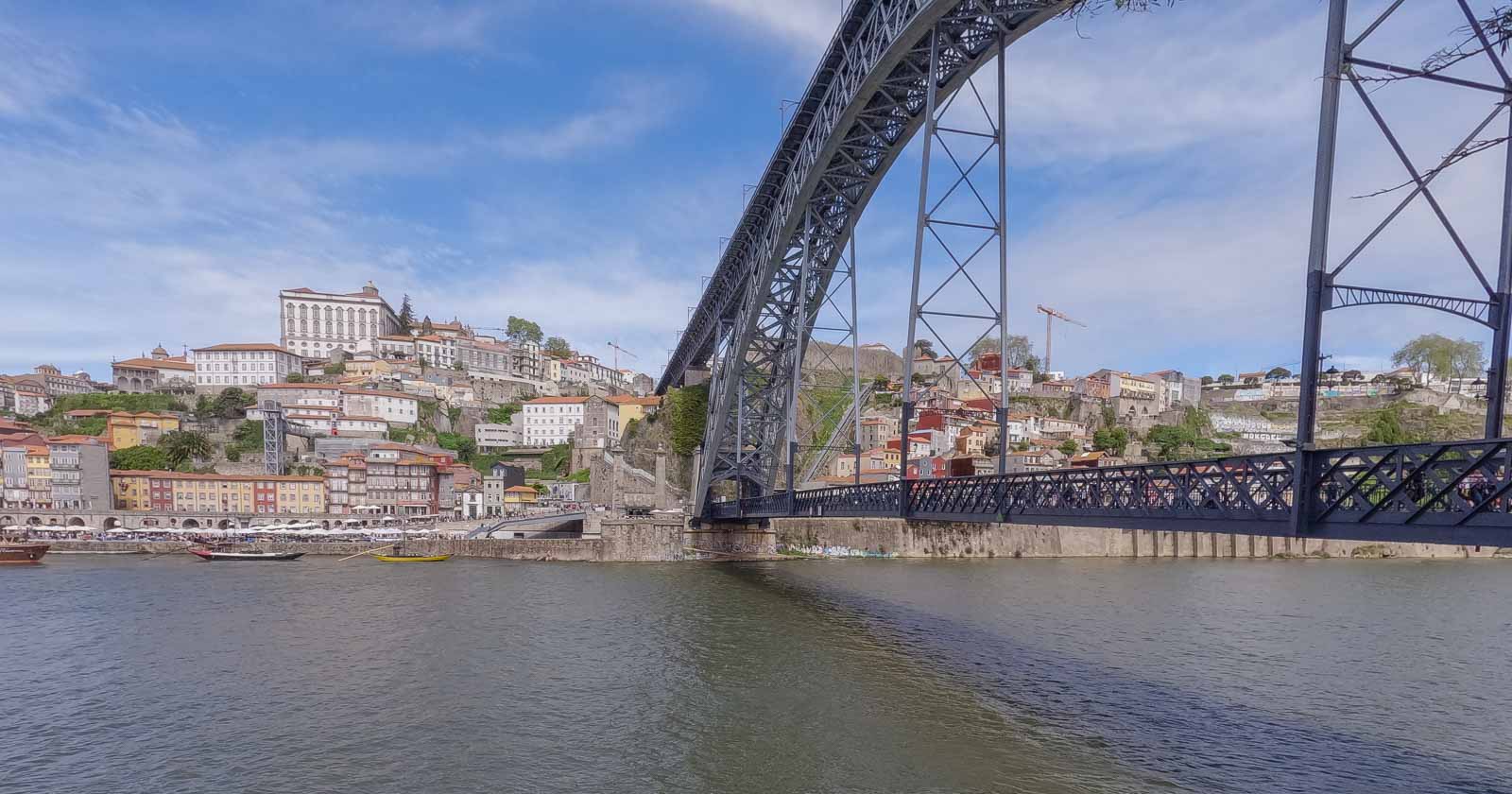
The Luís I Bridge is a renowned arched iron bridge spanning the Douro River, linking Porto with Vila Nova de Gaia. Among the countless bridges in Porto, the Dom Luis I Bridge is particularly famous due to its designer, a student of Gustave Eiffel, the architect famed for creating the Eiffel Tower in Paris.
Clérigos Tower
The Clérigos Church and its bell tower rank among Porto’s most popular attractions. For one of the most spectacular panoramic views of the old town and the Douro River, we recommend climbing the steep steps to the top.
You can buy the Clérigos Tower entry ticket online.
Church of São Francisco
The Church of São Francisco is Porto’s most well-known Gothic monument, also remarked for its unique Baroque interior decoration. Recognised as a UNESCO World Heritage Site, it’s situated within Porto’s historic centre.
Livraria Lello
Livraria Lello is praised as the World’s most beautiful bookstore, where the magic of Harry Potter seems to come alive. Established by the Lello brothers in 1906, this bookstore continues to impress locals and tourists with its Neo-Gothic and Art Nouveau architectural designs crafted by Francisco Xavier Esteves.
Rua das Flores
Rua das Flores is a historic 500-year-old street and one of Porto’s main streets near São Bento Station. We loved the quantity of street art along this street, which was hard to miss. A walk around Rua das Flores is a must in Porto, where you can relax and stop at souvenir shops, restaurants, and coffee shops.
Cat Mural
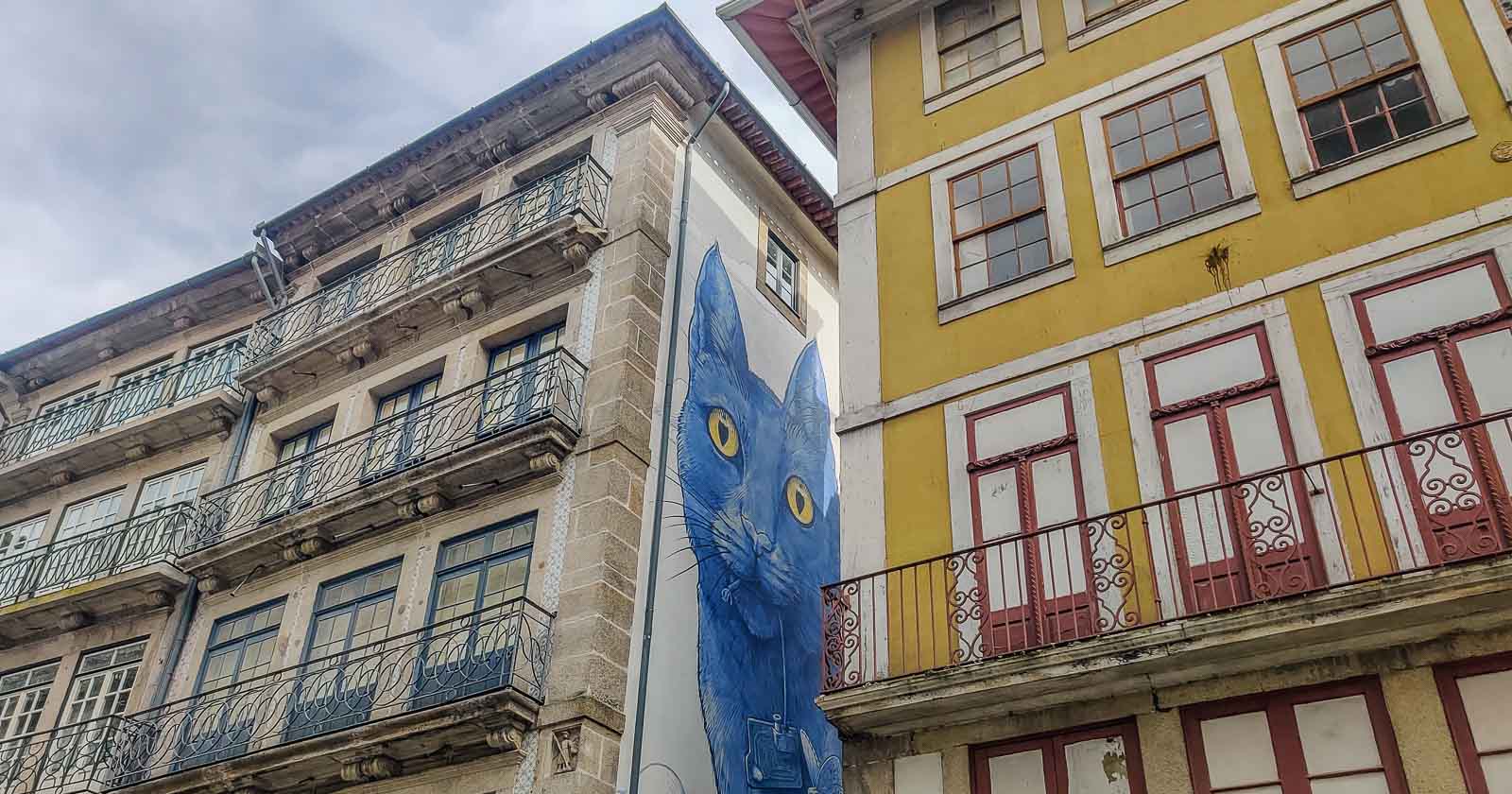
Afonso Martins Alho Street is Porto’s narrowest street, measuring just 30 meters in length. Here, one can find a huge cat artwork titled “Perspéntico” by Galician artist Liqen. This large mural spans five stories, and the cat is painted in a blue colour chosen to complement the famous colour of Azulejo ceramics.
Location: Perspéntico, o Gato-Cidade Porto
McDonald’s Imperial
McDonald’s Imperial in Porto is one of the most beautiful McDonald’s in the World. As soon as you arrive near the almost hidden restaurant, you’ll notice the entrance on a wide sidewalk covered with trees. Above the door is the original Imperial Eagle logo, which indicates that this McDonald’s is unique.
Location: McDonald’s Imperial on Praça da Liberdade
Miradouro da Vitória
Miradouro da Vitória is a scenic viewpoint situated on private property. The gate is typically left open, so visitors can access it free of charge. From this viewpoint, you can enjoy one of the best panoramic views surrounding the Douro River, the city’s rooftops, the port wine lodges in Gaia, the cathedral, and the Dom Luis I Bridge.
Backstreets of Ribeira
The Ribeira district is a unique area on a hillside, characterised by its cobblestone streets and vibrant buildings. It offers a truly atmospheric experience for wandering around. However, despite its beauty, we found it crowded and with too much ongoing construction during our visit.
For the best experience, we recommend going off the beaten path and exploring Ribeira’s less frequented neighbourhoods and backstreets, where you can experience the local life.
Mercado do Bolhão
Mercado do Bolhão, established in 1914, is one of the most popular and vibrant markets in Porto. This colourful market specialises in flowers, vegetables, meat, fruit, fish, and many other products.
Even if you’re not planning to buy anything from the market, it’s still worth visiting Mercado do Bolhão’s unique atmosphere.
Pérgola da Foz
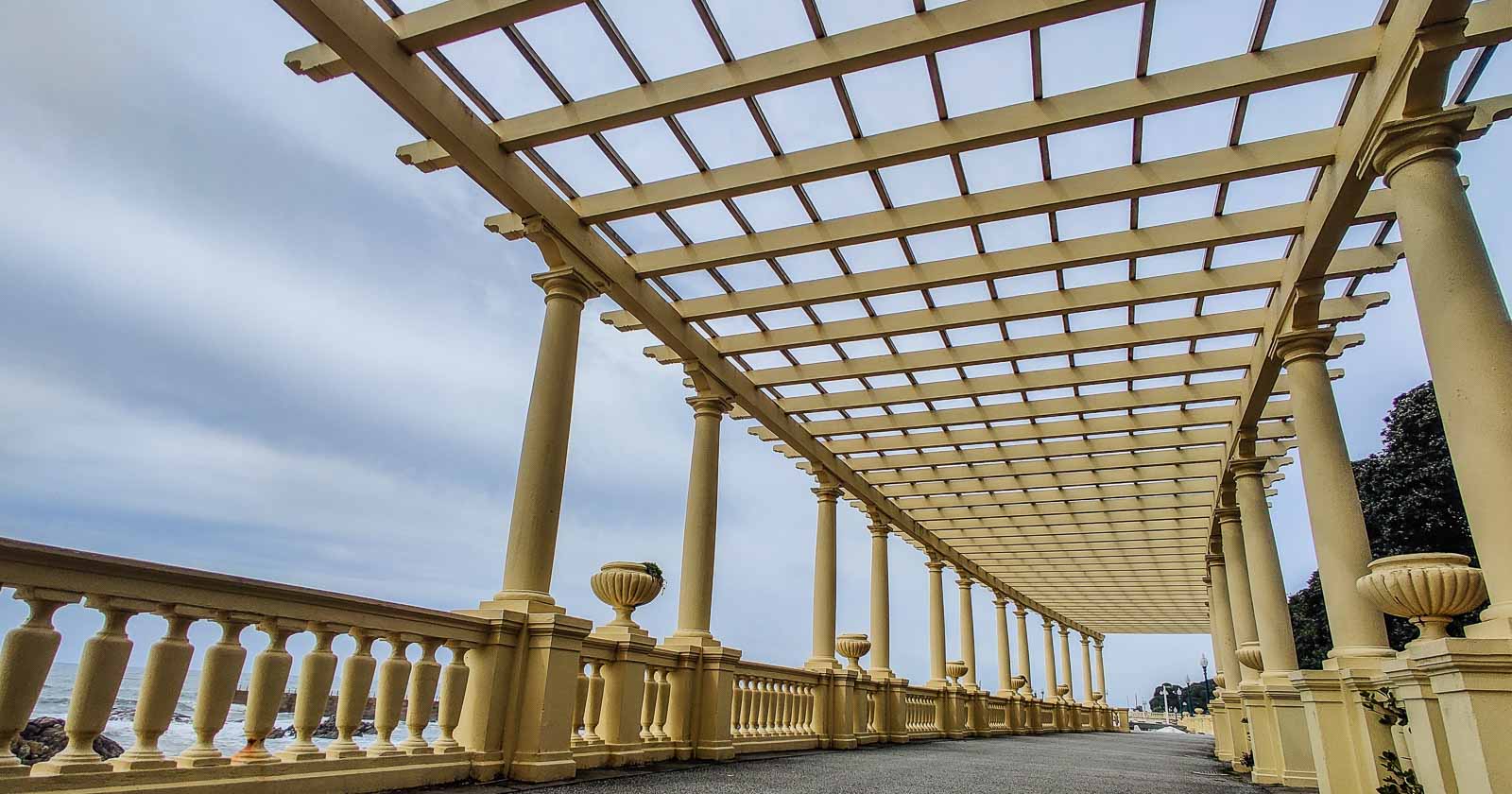
Pérgola da Foz is a neoclassical structure painted in a striking golden yellow. It’s between Avenida de Montevideo’s gardens and Praia da Luz. The structure’s colour shifts with the sun’s position throughout the day. It’s one of Porto’s iconic landmarks, offering a spacious seaside promenade perfect for a tranquil walk.
Getting Around Porto
Getting around Porto is quite easy, as there are many transport options, including buses, trams, metros, and funiculars. However, remember that Porto is hilly so be prepared to take some steep slopes and steps.
The most cost-effective and convenient choice is the rechargeable Andante card, accepted on all public transportation in Porto, including the metro, bus, tram, and funicular.
You can buy the Andante card for €7.50, valid for one day (24 hours), or €16 for three days (72 hours).
Where to Stay in Porto
Choosing accommodation in Porto can be challenging, particularly in downhill areas. If you’re travelling with large luggage, it will be hard to walk up the steep hills to your accommodation and reach the main attractions.
While in the main areas, you’ll be close to everywhere and also very convenient, they tend to be pricier and more tourist-centric. We recommend staying in the Bonjoia area as you’ll be just 30 minutes away from the centre while staying in a more tranquil area away from the crowds.
Vila Nova de Gaia
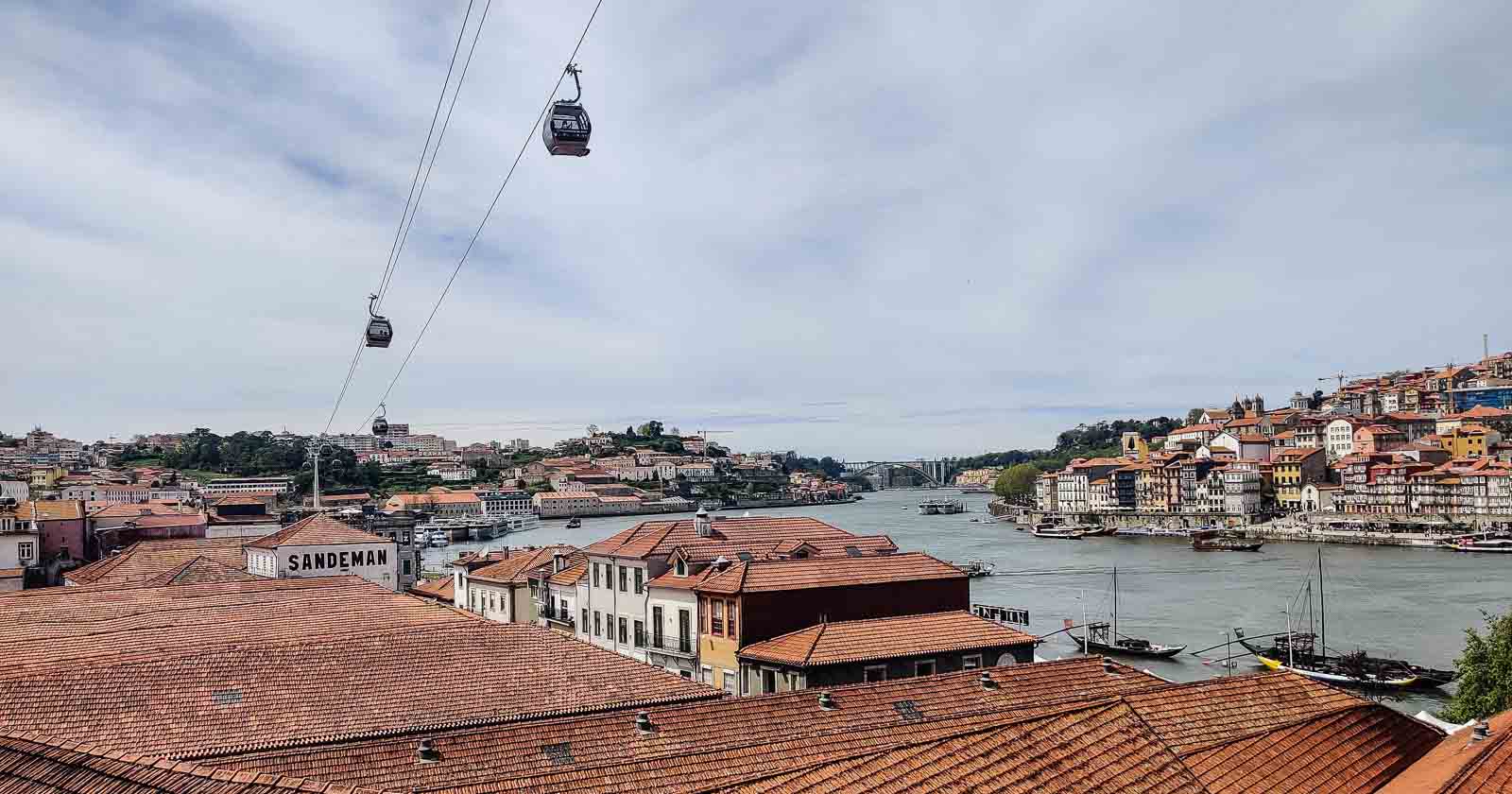
Vila Nova de Gaia is commonly confused as a district of Porto; however, it’s an independent city across the River Douro from Porto and the Ponte Luis I Bridge from Ribeira.
Renowned as a central hub for the port wine industry, a trip across the river to Vila Nova de Gaia is definitely worth it. Whether you go on a cable car ride, indulge in a port-tasting tour, or unwind while exploring the surroundings, there’s much to enjoy in this area.
Not to Miss in Vila Nova de Gaia
Half Rabbit Mural
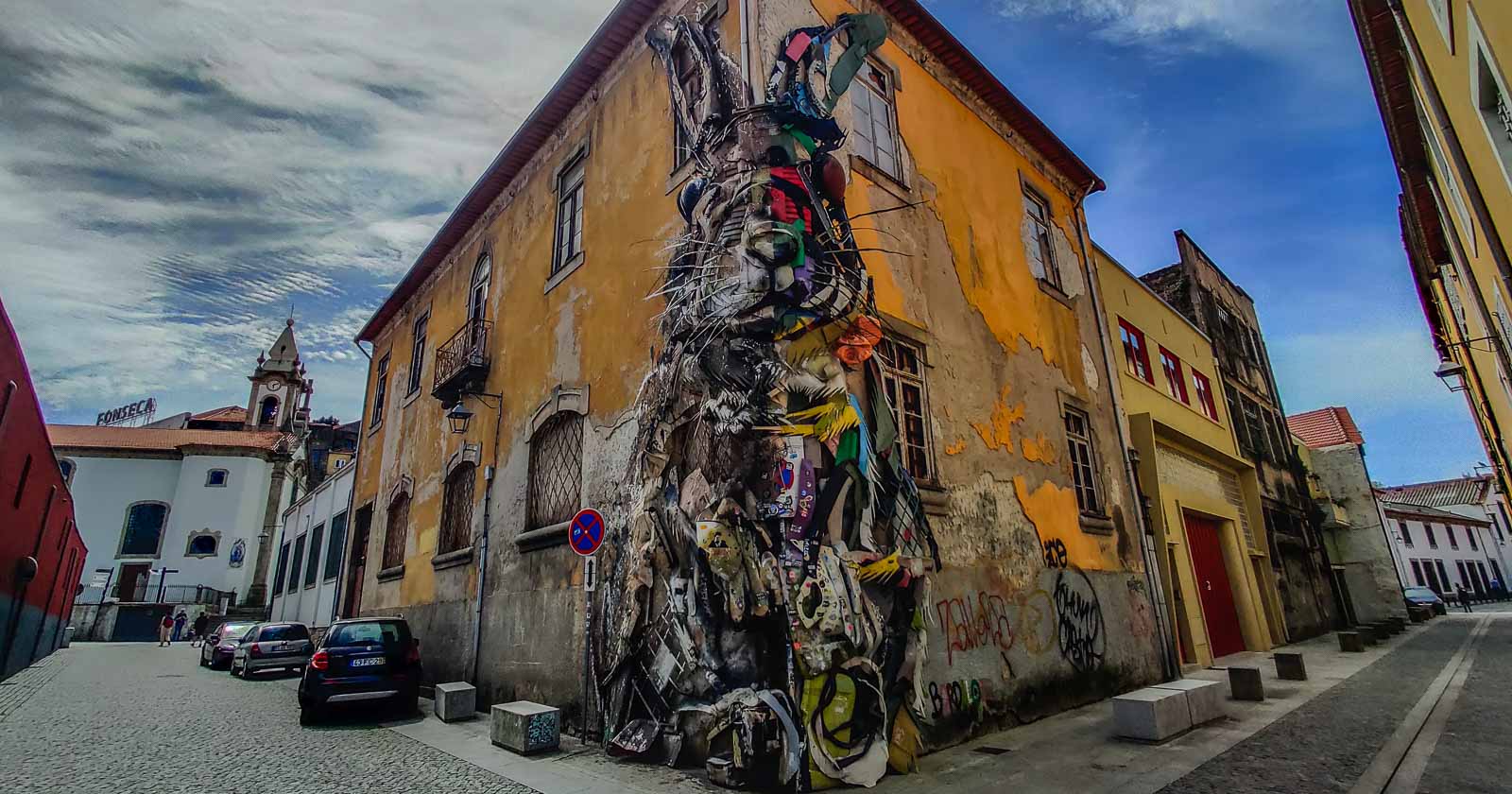
The half rabbit mural is found on one of the buildings in Gaia’s quiet and winding streets. It’s a massive sculpture of a rabbit made of trash and recycled materials collected from the city, formed by the great Bordalo II.
It serves as a thoughtful reminder of art’s boundless nature, showcasing its ability to emerge from the most unexpected origins.
Street Art Graffiti
Throughout Vila Nova de Gaia, one can find many street art graffiti decorating walls, storefronts, and abandoned buildings, reviving them with beautiful artworks created by some of Portugal’s best street artists.
Douro River
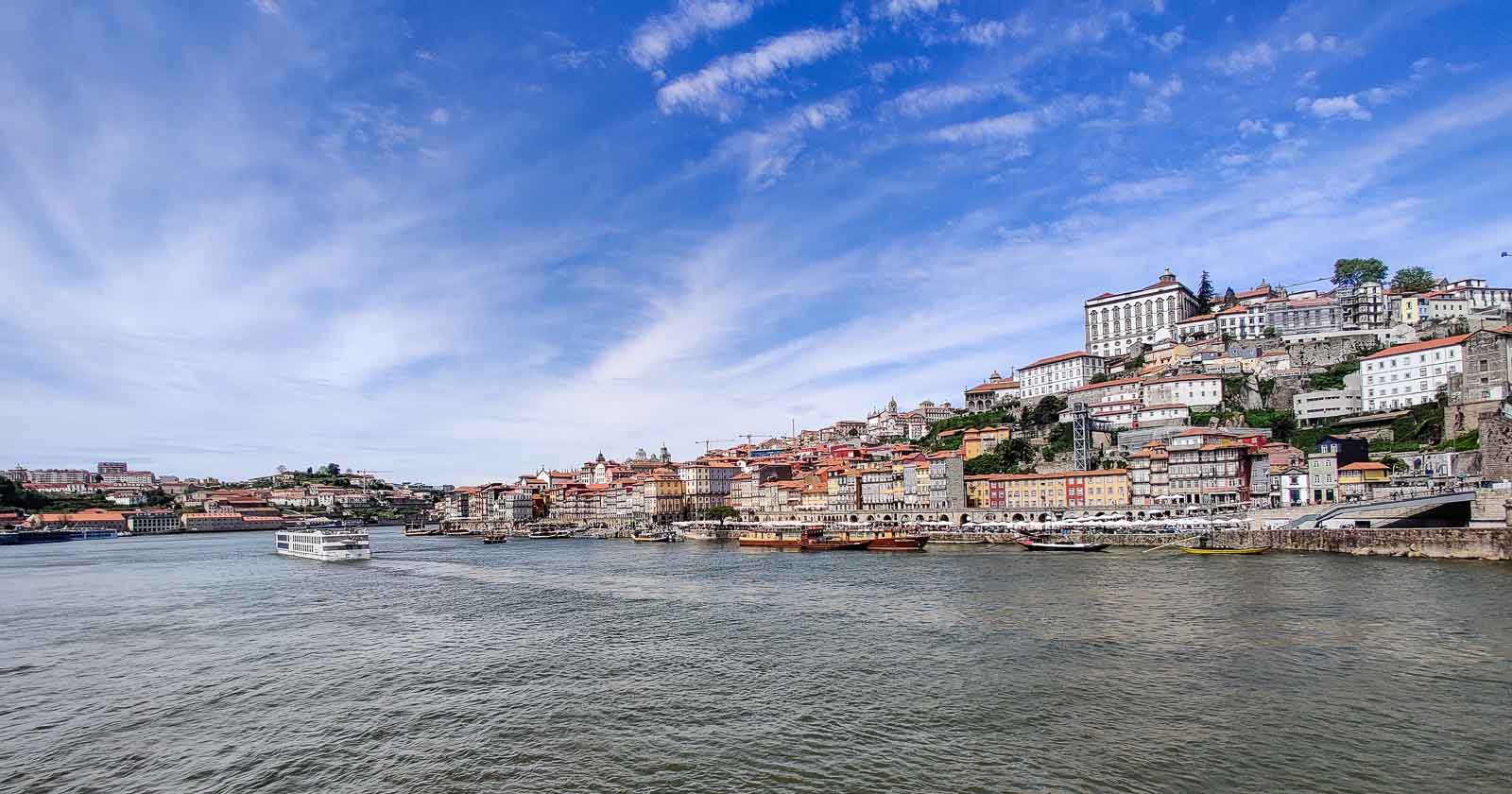
The Douro River is the largest river of the Iberian Peninsula. The best place to experience it is from Vila Nova de Gaia.
As you make your way across the iconic Luís I Bridge over the Douro River, you’ll be greeted by a breathtaking sight. This is just the beginning of your journey to explore the beauty of the Douro River.
Port Wine Cellars
You can’t visit Vila Nova de Gaia and not notice the famous wineries and vineyards.
The Port Wine cellars atop the rocky hills of Vila Nova de Gaia are notably famous and clustered within the historic centre of Gaia, particularly around the Porto Moments house.
Wine Tasting
One of the best experiences for wine lovers in Vila Nova de Gaia is to taste their port wine. You can easily book the most famous wine tasting & winery tours online.
Braga
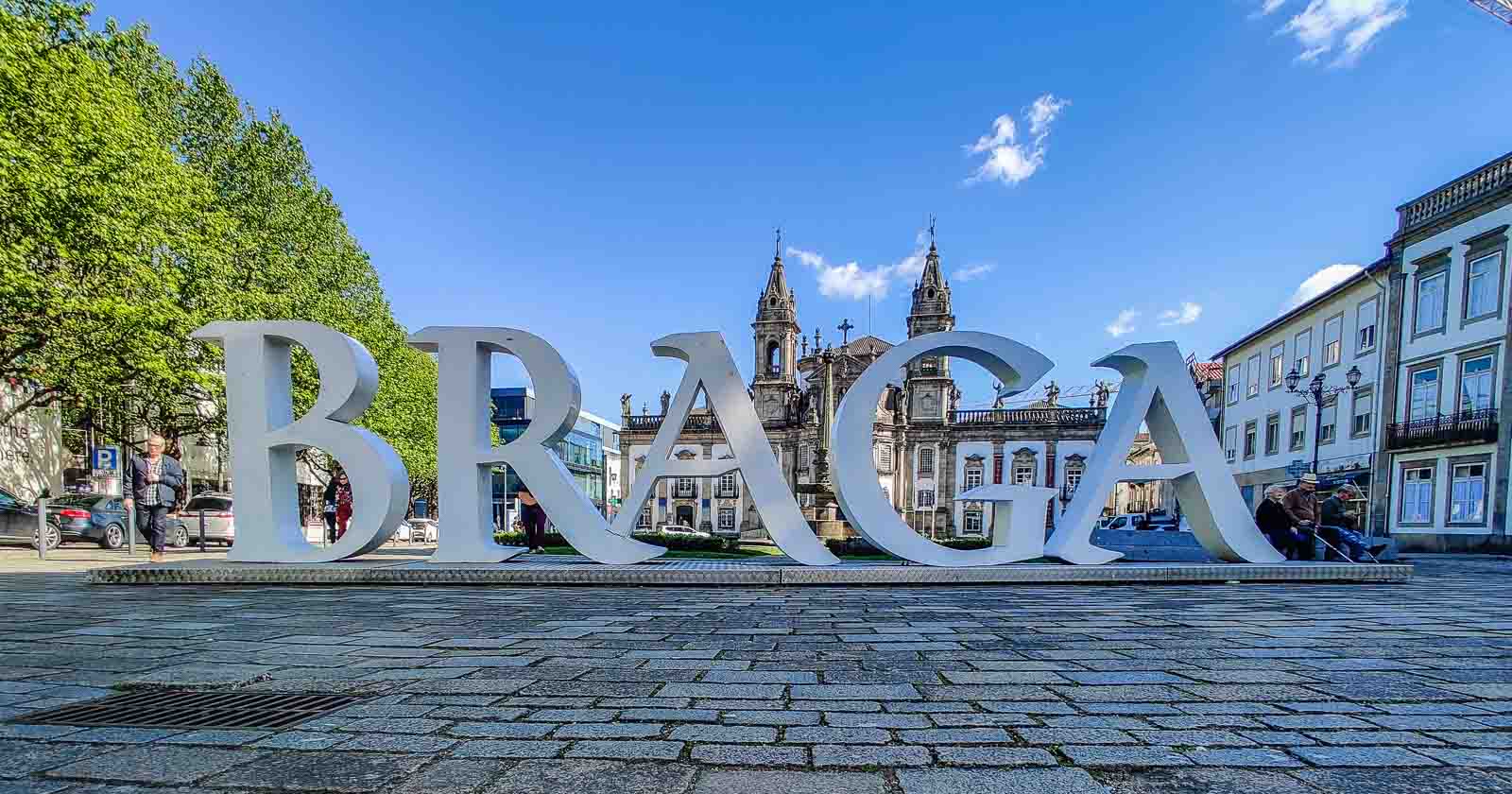
Braga, situated in the north of Portugal and northeast of Porto, proudly showcases its renowned religious heritage, making it a must-visit for those interested in this aspect of history.
Despite being one of Portugal’s significant cities, following Lisbon and Porto, Braga offers few tourist attractions. The majority of famous attractions are situated within Braga’s historical centre.
Not to Miss in Braga
Bom Jesus do Monte
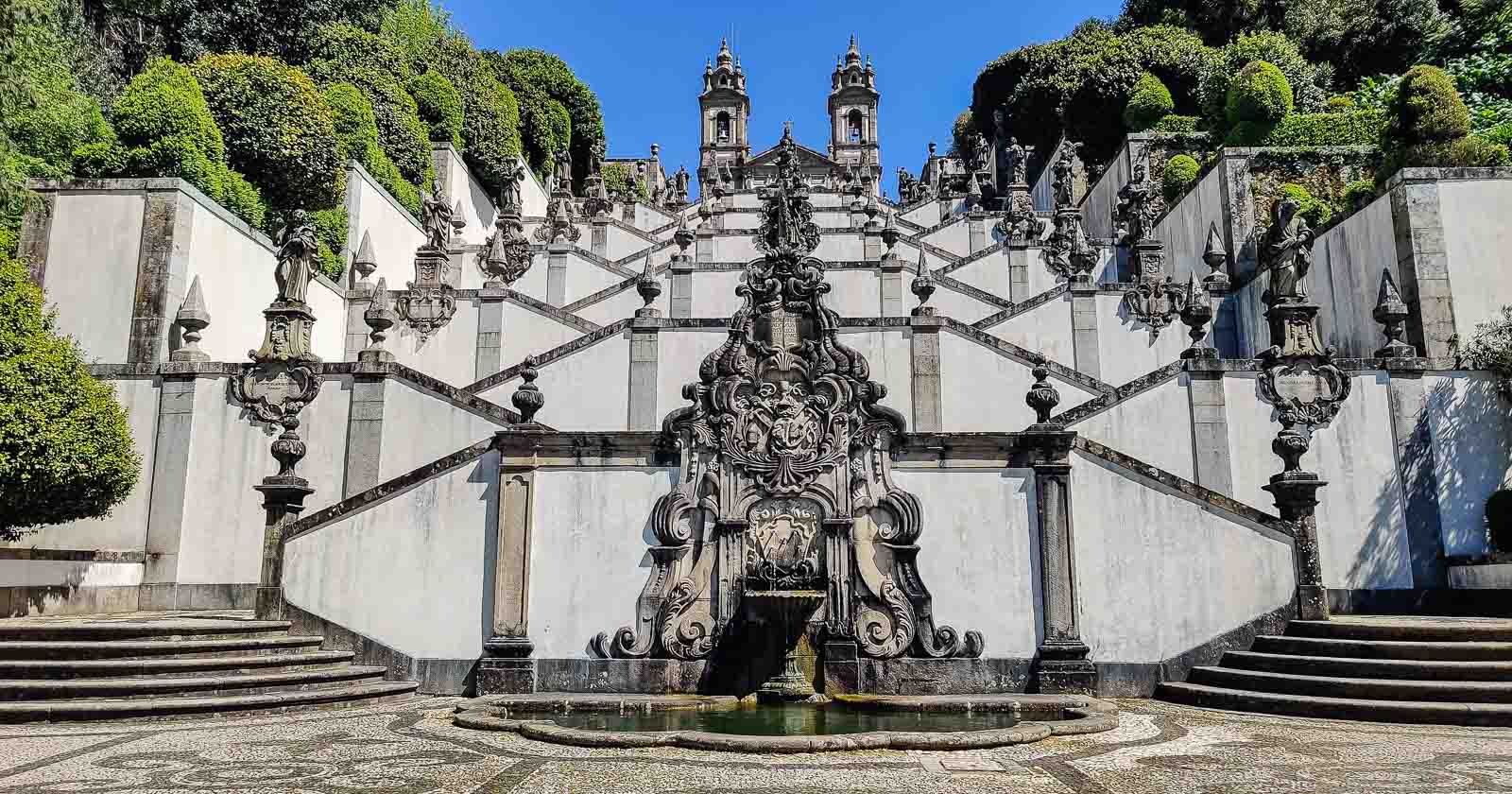
Bom Jesus do Monte, translating to “Good Jesus of the Mount,” is a Catholic shrine in Portugal, constructed in 1784. It’s accessible via a 577-step granite staircase adorned with fountains and statues across 17 landings.
Marking a notable occasion on July 7, 2019, the Sanctuary of Bom Jesus do Monte in Braga received the esteemed title of a UNESCO World Heritage Site, firming its profound historical and cultural importance.
Garden of Santa Barbara
The Garden of Santa Barbara welcomes visitors throughout the year, providing a peaceful escape from urban daily life. It offers tranquillity surrounded by greenery and vibrant flowers.
The garden’s geometric design includes remains from the palace, including antique statues. Dominating the garden’s focal point stands a fountain illustrated with a statue of Santa Barbara.
Arch of The New Gate
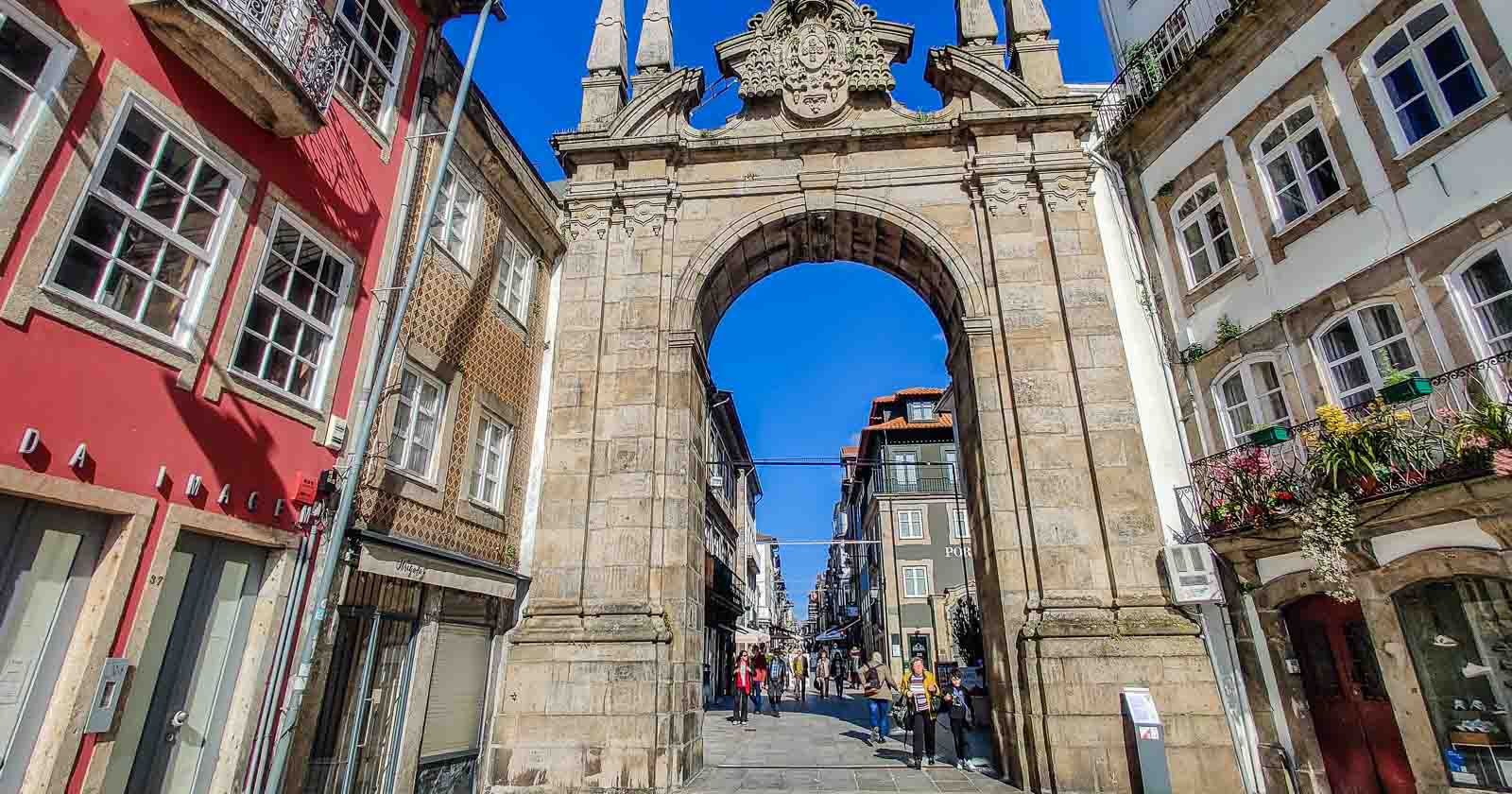
The Arch of The New Gate, designed by André Soares during the late 18th century, marks the entrance to Braga’s historic centre from the west.
It was one of the eight city gates, initially guiding traffic exclusively to a fish market rather than linking to the pathways established in Roman times.
Braga Castle Tower
The only remaining elements of Braga Castle are various scattered sections and its keep. A keep is a fortified tower commonly found within medieval castles built by European nobility. These structures date back to the 13th-century construction period.
The 13th century was a time of magnificence and strong military construction efforts. It contained most medieval defensive structures, including castles and urban fortifications, leaving a lasting mark on history.
Casa do Raio
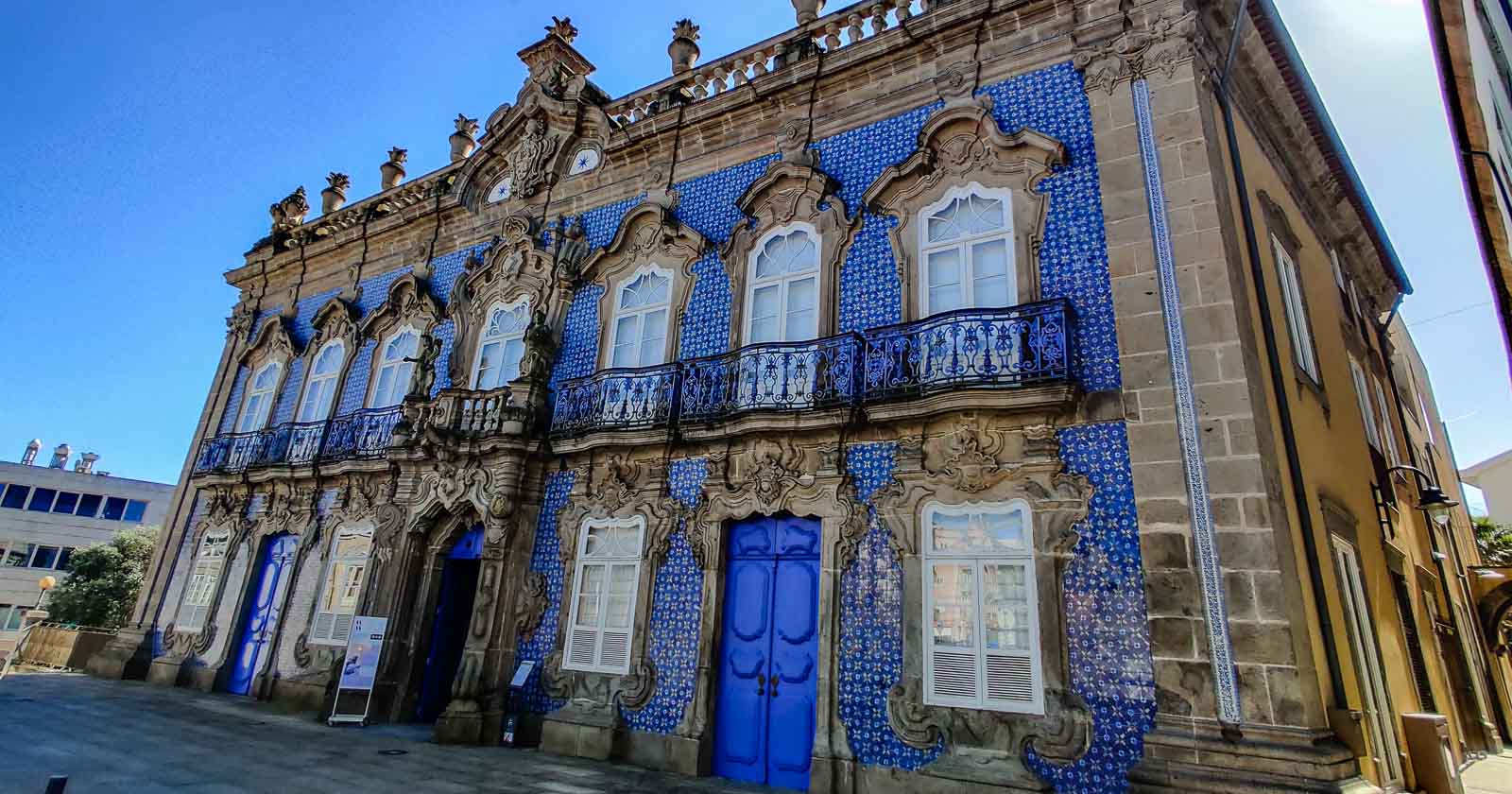
Constructed in the 1750s, Casa do Raio originally served as the private residence of João Duarte de Faria. Its two-story façade is coated with traditional azulejo tiles, contrasting beautifully with the elegant sandstone carvings typical of baroque architecture.
Getting Around Braga
The best way to get around Braga is by bus and on foot. You don’t need much time there, as all attractions except Bom Jesus do Monte are in the historical centre, so one day is enough to explore everything.
Bus services operate from 7am to 9pm and cost €2 with the ticket valid for 2.5 hours. Note that many routes do not operate on weekends or holidays.
Where to Stay in Braga
Selecting the right place to stay in Braga is important for enjoying the ancient city and exploring the renowned Bom Jesus do Monte. The most convenient choice is to stay within or near the historic city centre.
Explore the top accommodations in Braga, ranging from hotels, hostels, and private apartments to various other options.
Guimarães
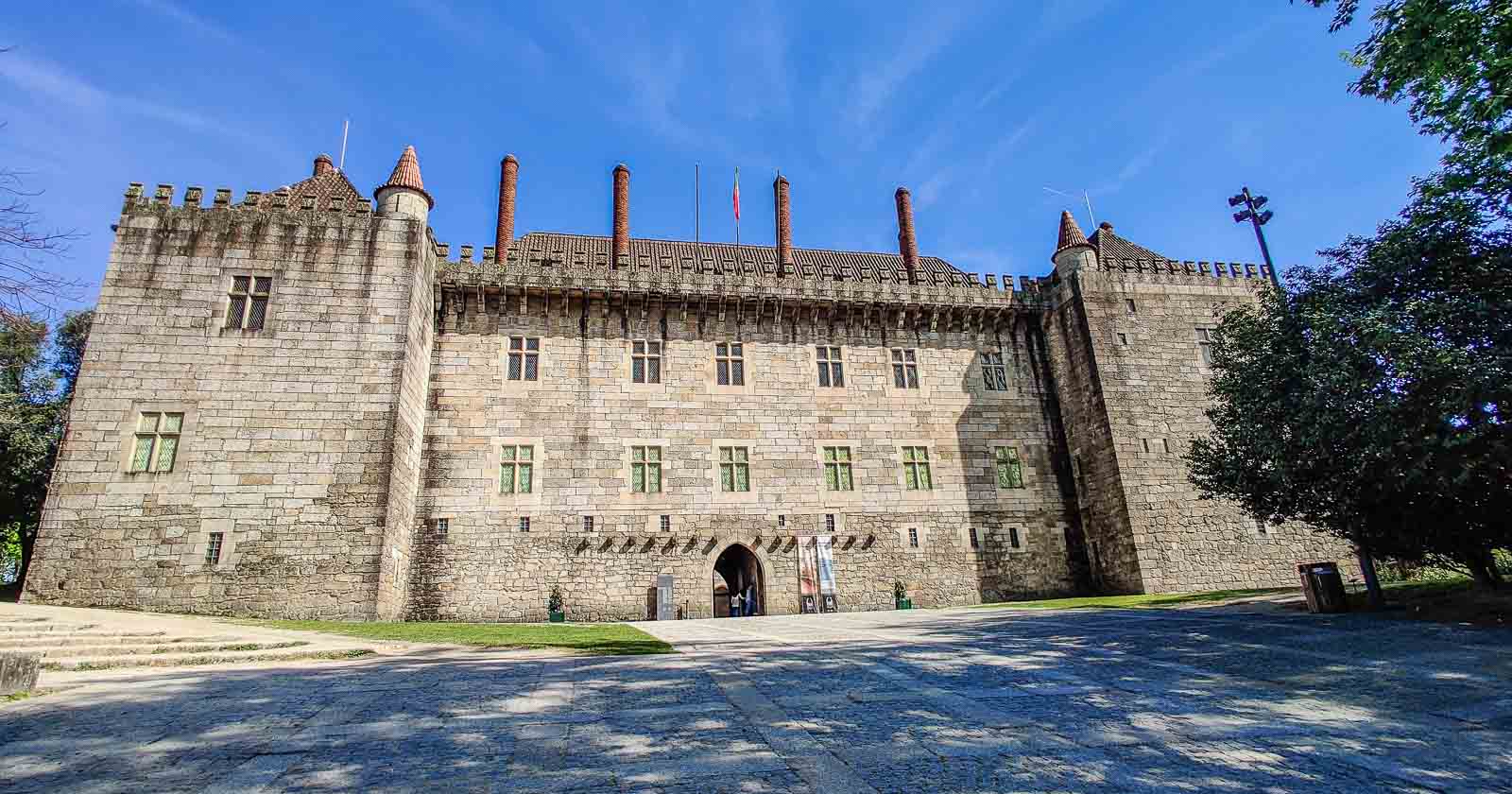
Guimarães is renowned as the birthplace of Portugal. Founded in the 4th century, it later became the country’s first capital in the 12th century. The town is known for its UNESCO-listed historic city centre, making it one of our favourite destinations in Portugal.
Must See in Guimarães
Penha Cable Car
The Penha Cable Car, which began operation on March 11, 1995, is believed to be the first cable car in Portugal. It connects the city of Guimarães to Penha Mountain, covering a distance of 1,700 meters and ascending 400 meters, offering breathtaking views.
This journey leads to an incredible place of worship in the Sanctuary of Nossa Senhora do Carmo da Penha.
Opening Hours: 10:00 AM to 6:30 PM
Round Trip (2 Journeys):
- Adult: €7.50
- Children (Ages 6-11): €3.50
- Children (Ages 0-5): Free
One-Way Trip (1 Journey):
- Adult: €4.00
- Children (Ages 6-11): €2.00
- Children (Ages 0-5): Free
Guimarães Castle
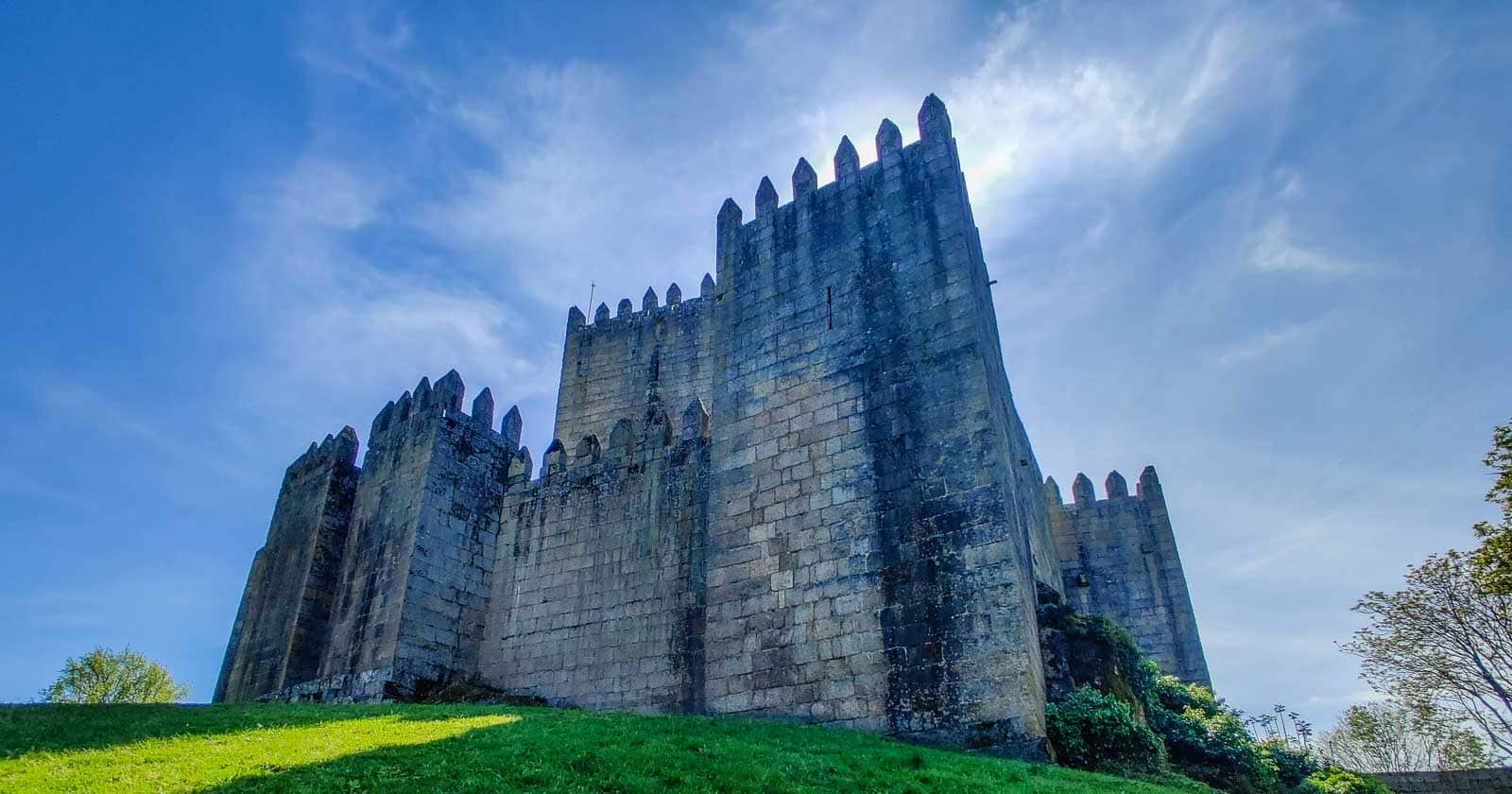
Guimarães Castle is a unique architectural wonder listed on Portugal’s UNESCO World Heritage list. It’s the birthplace of D. Afonso Henriques, the first king of Portugal.
The castle is designed in a shield-like shape, and exploring its inner courtyard provides a pleasant opportunity to wander around and admire the surrounding walls.
Palace Duques de Bragança
Palace Duques de Bragança (the Palace of the Dukes of Braganza) is a medieval mansion and former residence of the first Dukes. Construction began in the early 15th century, inspired by French manor house designs.
Visiting the Palace Duques de Bragança is highly recommended while in Guimarães. The building itself is fascinating, featuring particularly unusual chimneys.
Padrão do Salado
Padrão do Salado is in the present parish of Oliveira, São Paio, and São Sebastião, within the Historic Center of Guimarães. It stands proudly in front of the Church of Nossa Senhora da Oliveira and has held National Monument status since 1910.
Praça de São Tiago
Praça de São Tiago is the main square in Guimarães. This square has retained its medieval characteristics despite being mentioned in numerous historical documents throughout the years.
It’s among the most attractive squares in Guimarães, decorated with colourful medieval buildings and outdoor cafes with tables.
Guimarães Historic Center
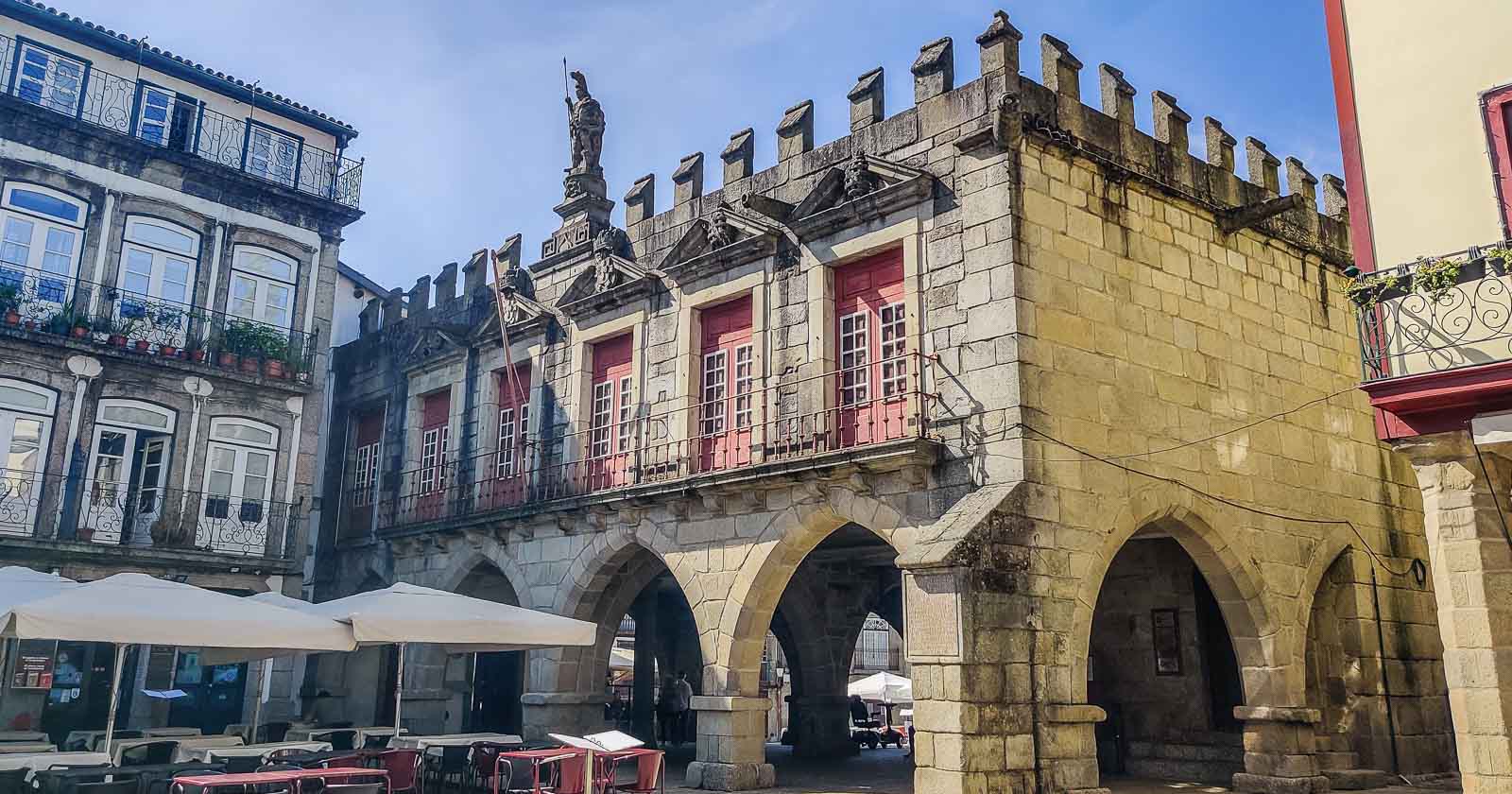
The Guimarães Historic Center is an urban area within the city of Guimarães represented by its medieval origins. It contains 16 hectares and preserves numerous buildings dating from the medieval to the 19th century.
The most authentic way to experience Guimarães, is spending some time relaxing in the historic centre, which is the lively corner of the city, particularly at night.
Getting Around Guimarães
Guimarães is a city that can easily be explored on foot, although it does have some hills! The historic centre is pedestrian-only, making it a pleasant and car-free area to explore.
If you prefer to use public transportation, we recommend the local buses. Single-journey tickets for very short trips start at €1.20.
Where to Stay in Guimarães
Discover the best accommodations in Guimarães for a pleasant stay, ranging from top-notch private lodgings and hotels to charming guesthouses.
Disclosure: Please note that some of the links in our content are affiliate links. If you book your accommodation or buy anything through our links, we earn a small commission at NO extra cost to you. We only recommend links to services we truly trust. Thank you for your support!











